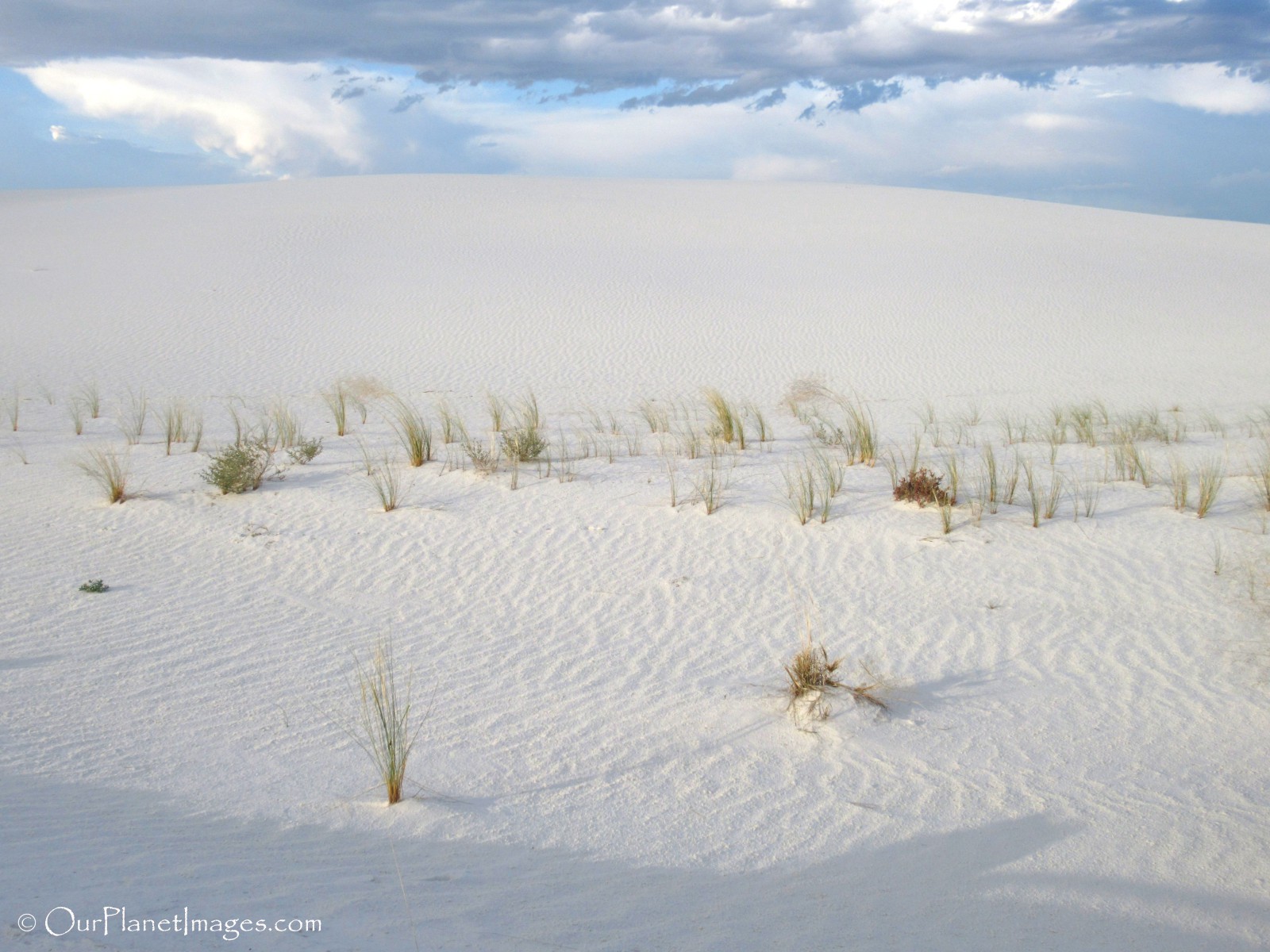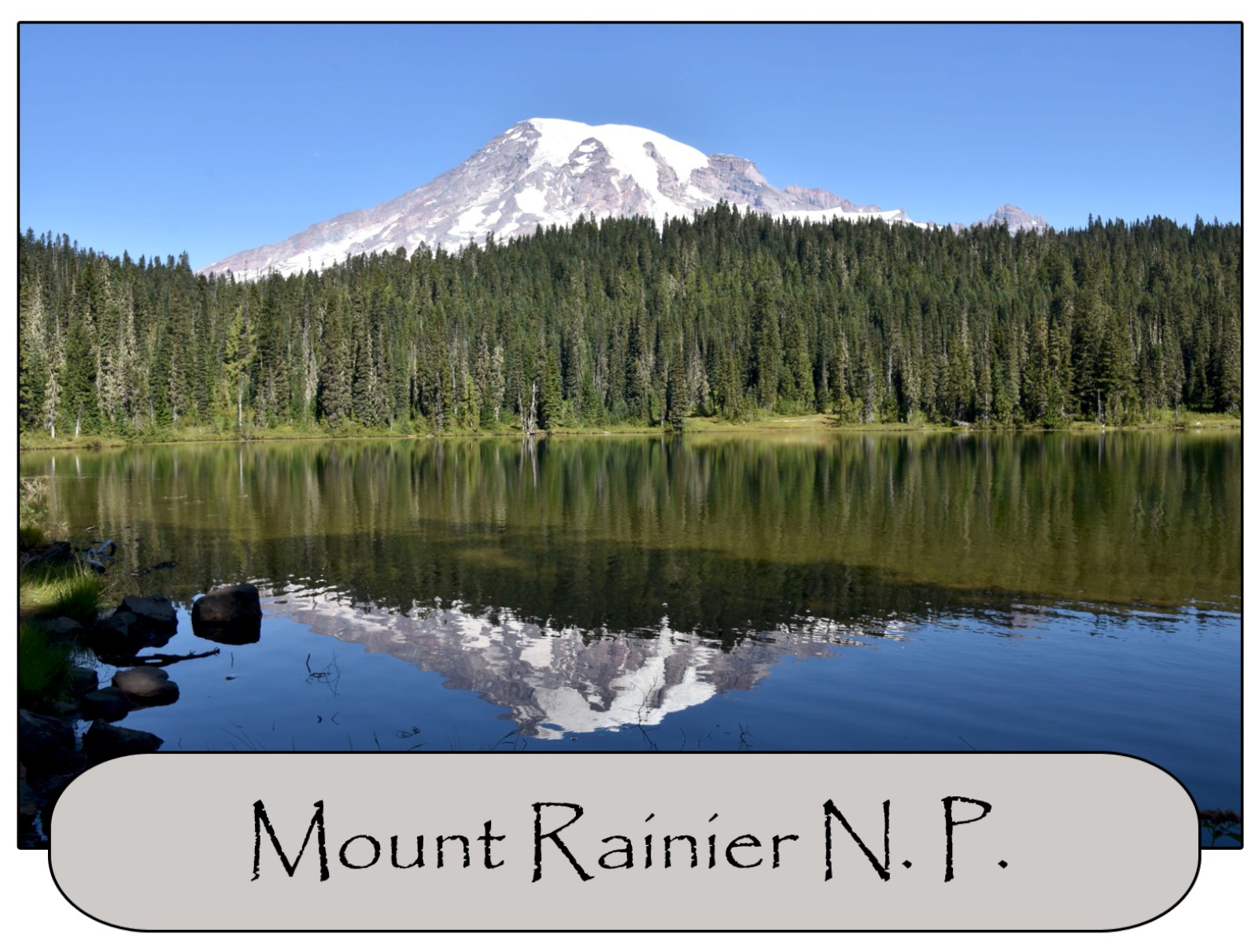Some dunes at White Sand National Park move up to 30 feet per year.
White Sands National Park is located in the northern end of the Chihuahuan Desert, about 50 miles east of Las Cruses, New Mexico. This bright white desert is the largest gypsum dune field in the world and it covers approximately 275 total square miles of dune fields. White Sands National Park occupies 115 square miles (over 40%) of the desert with the remainder being on military land that is not open to the public.
The pure gypsum that forms these unusual dunes originated from an extinct lake with a very high mineral content. As the water evaporated the minerals were left behind to form gypsum deposits. White Sands was established as a national monument in 1933 and re-designated as a national park in 2019. The park is accessible on a 16 mile round trip Dunes Drive that takes about 45 minutes to drive but it is permitted to stop along the way to take pictures, go on a hike or slide down the dunes.
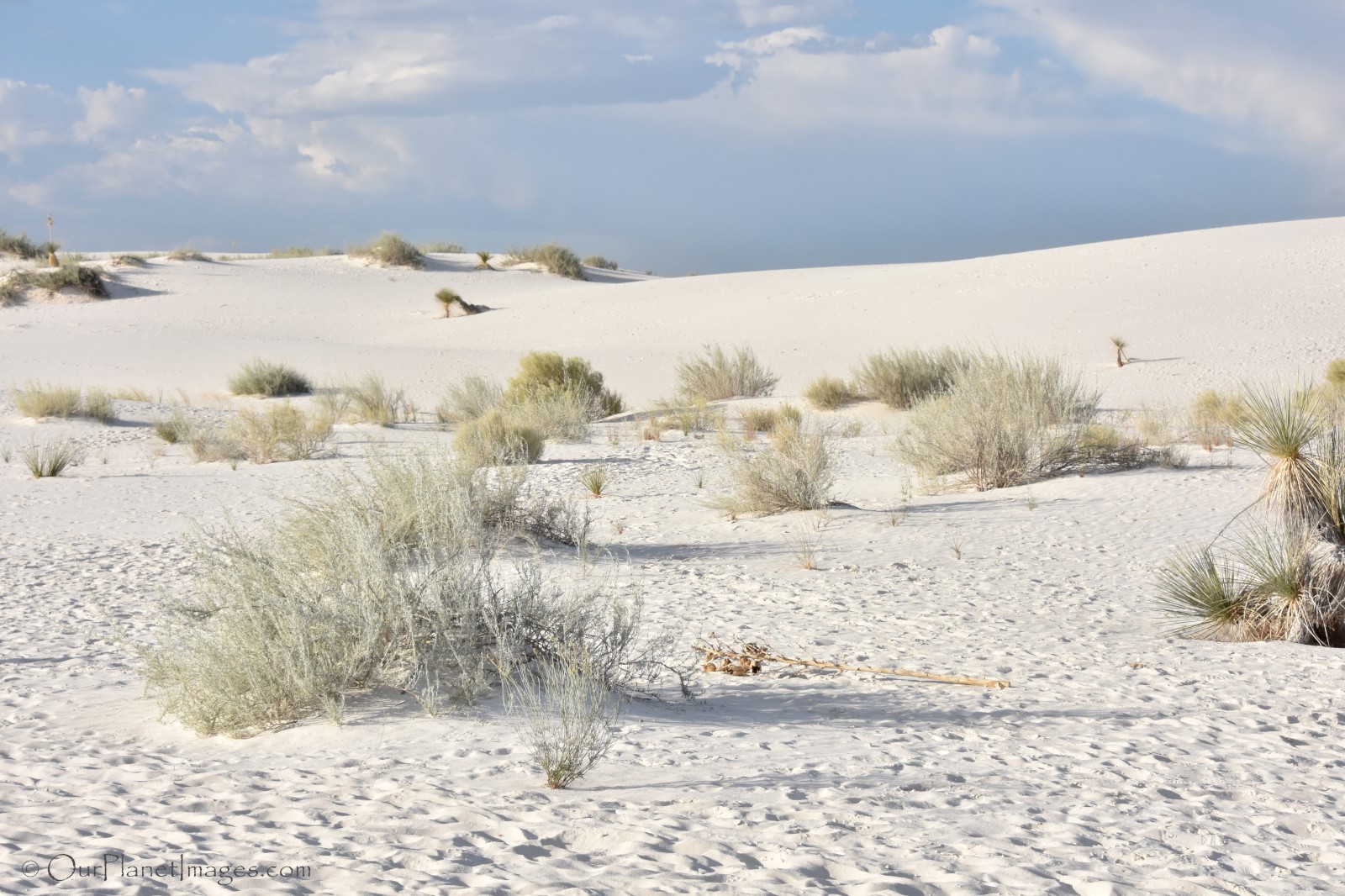
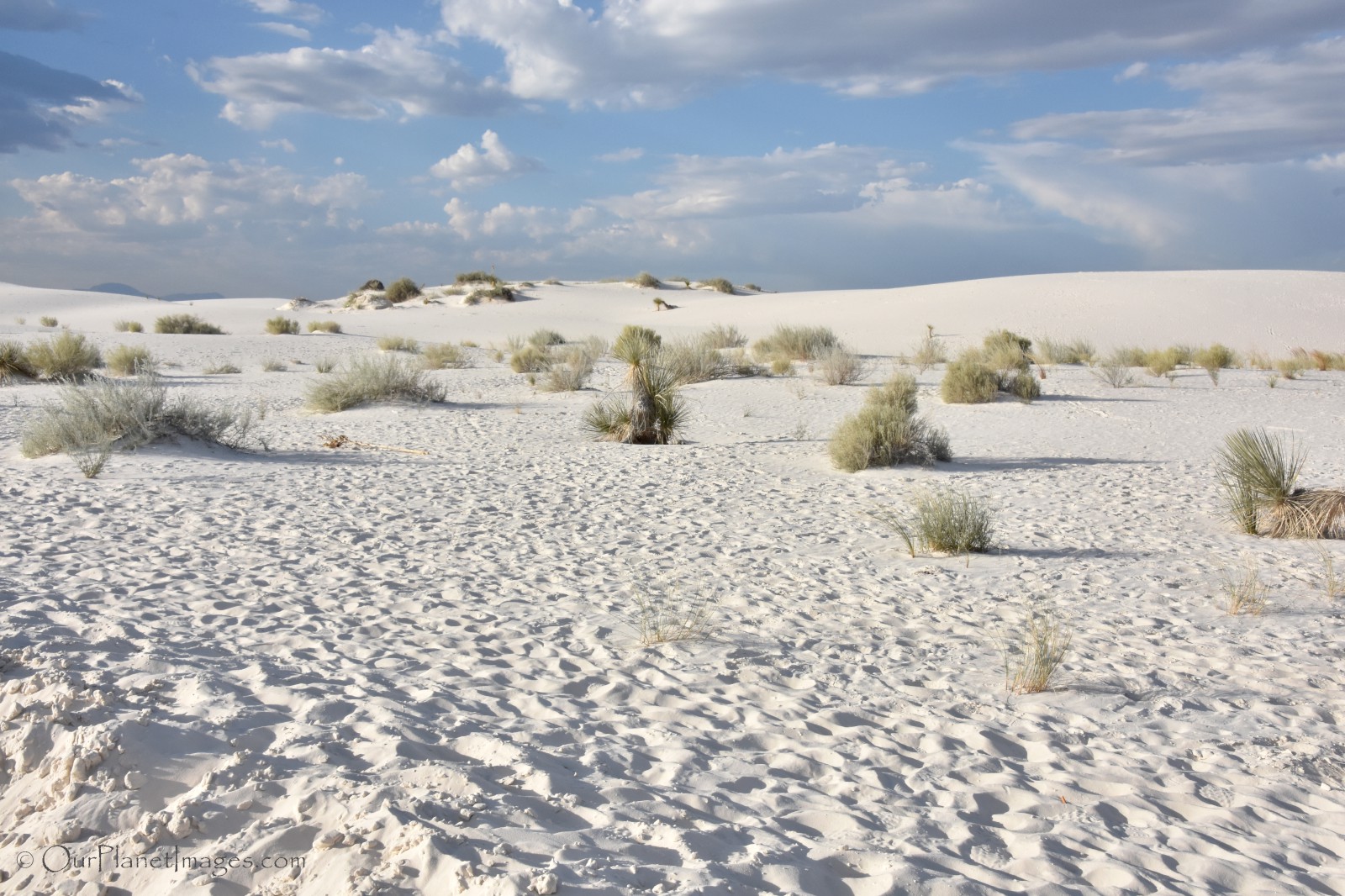
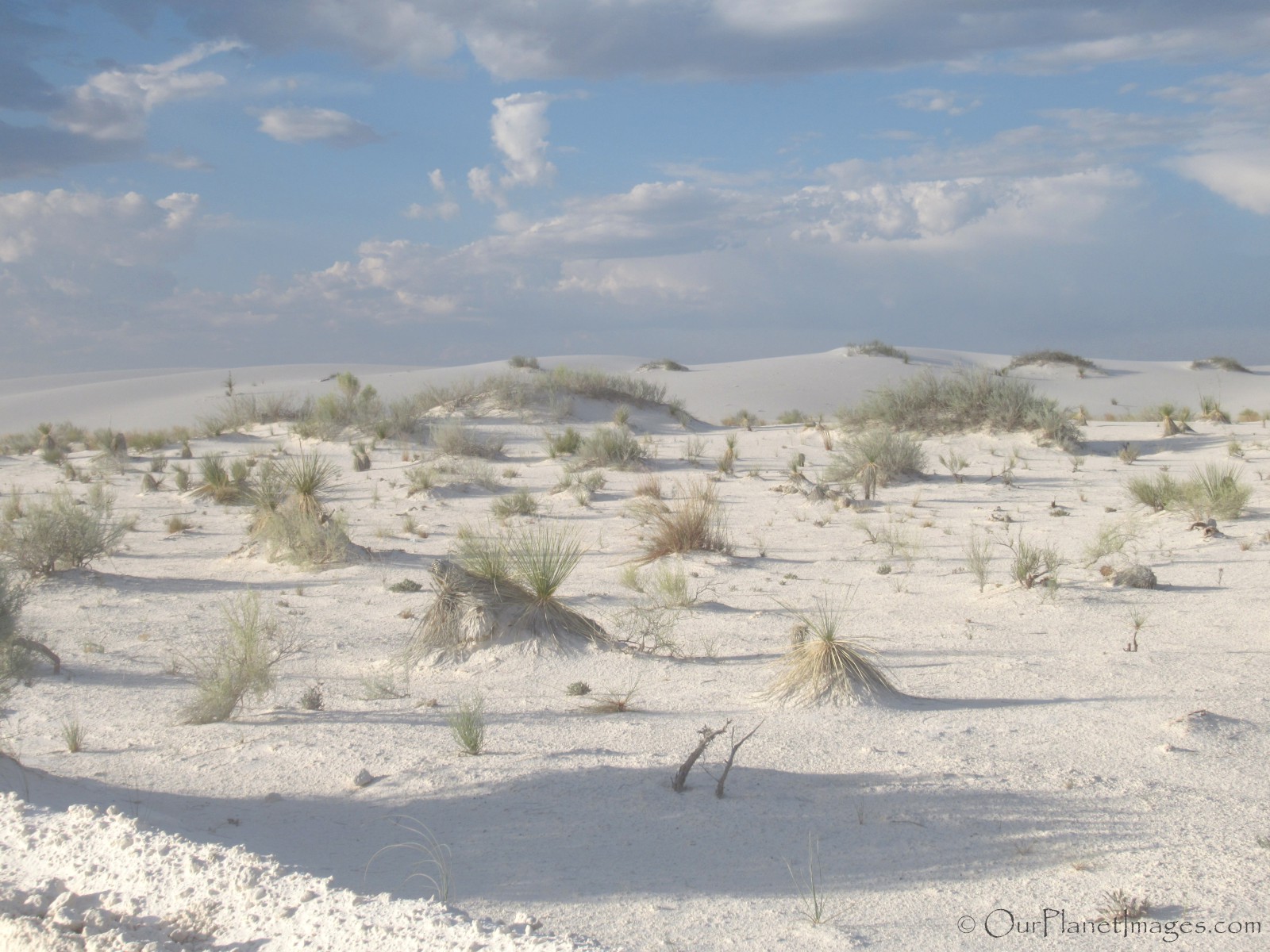
Dunes, dunes, dunes
The seemingly endless sea of white sand dunes has engulfed 275 square miles of desert, creating the world’s largest gypsum dune field that resembles an ocean of glittering sand. By comparison, the second largest gypsum dune field in the world is only eight (8) square miles in Cuatro Cienegas, Mexico.
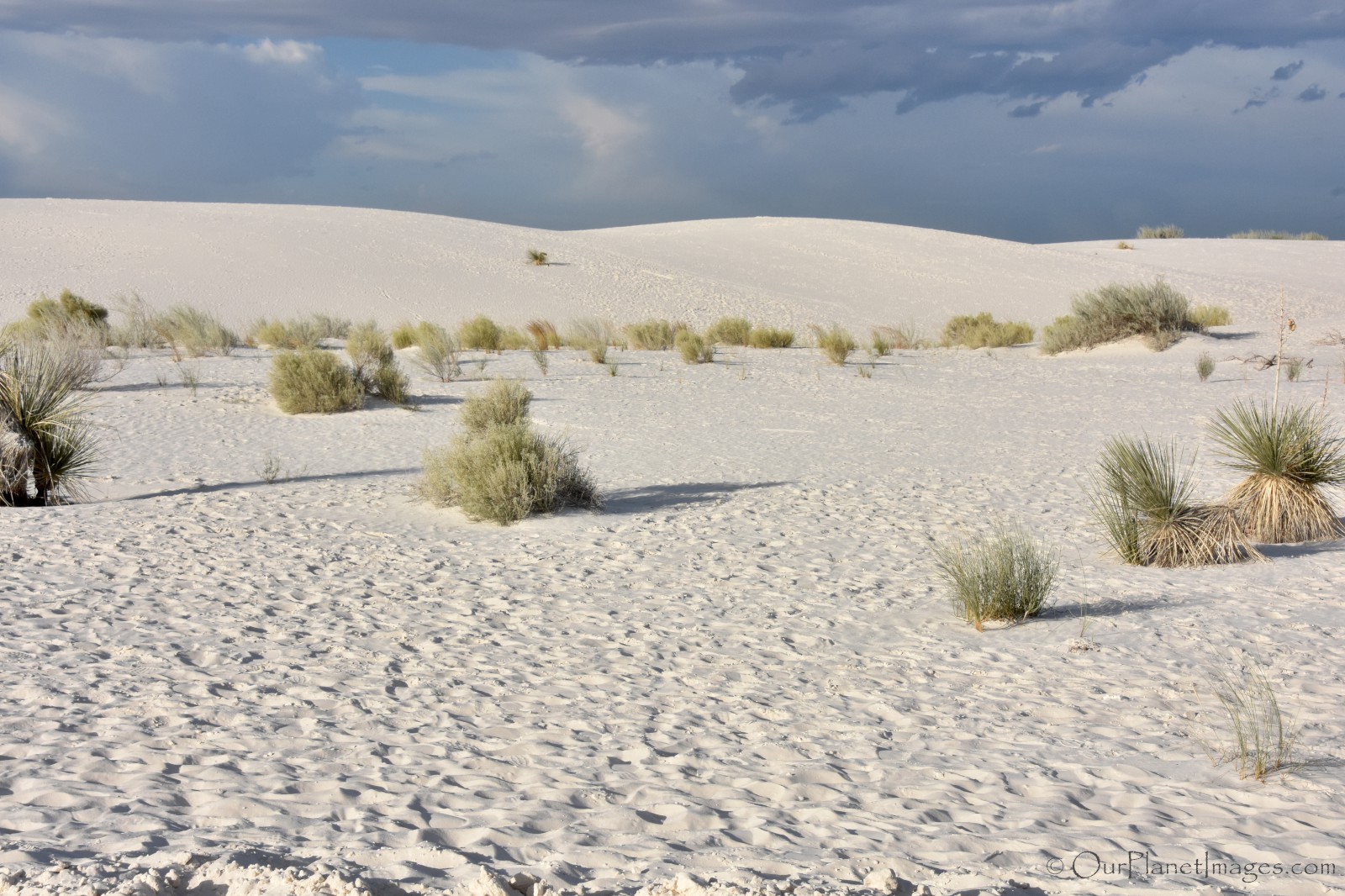
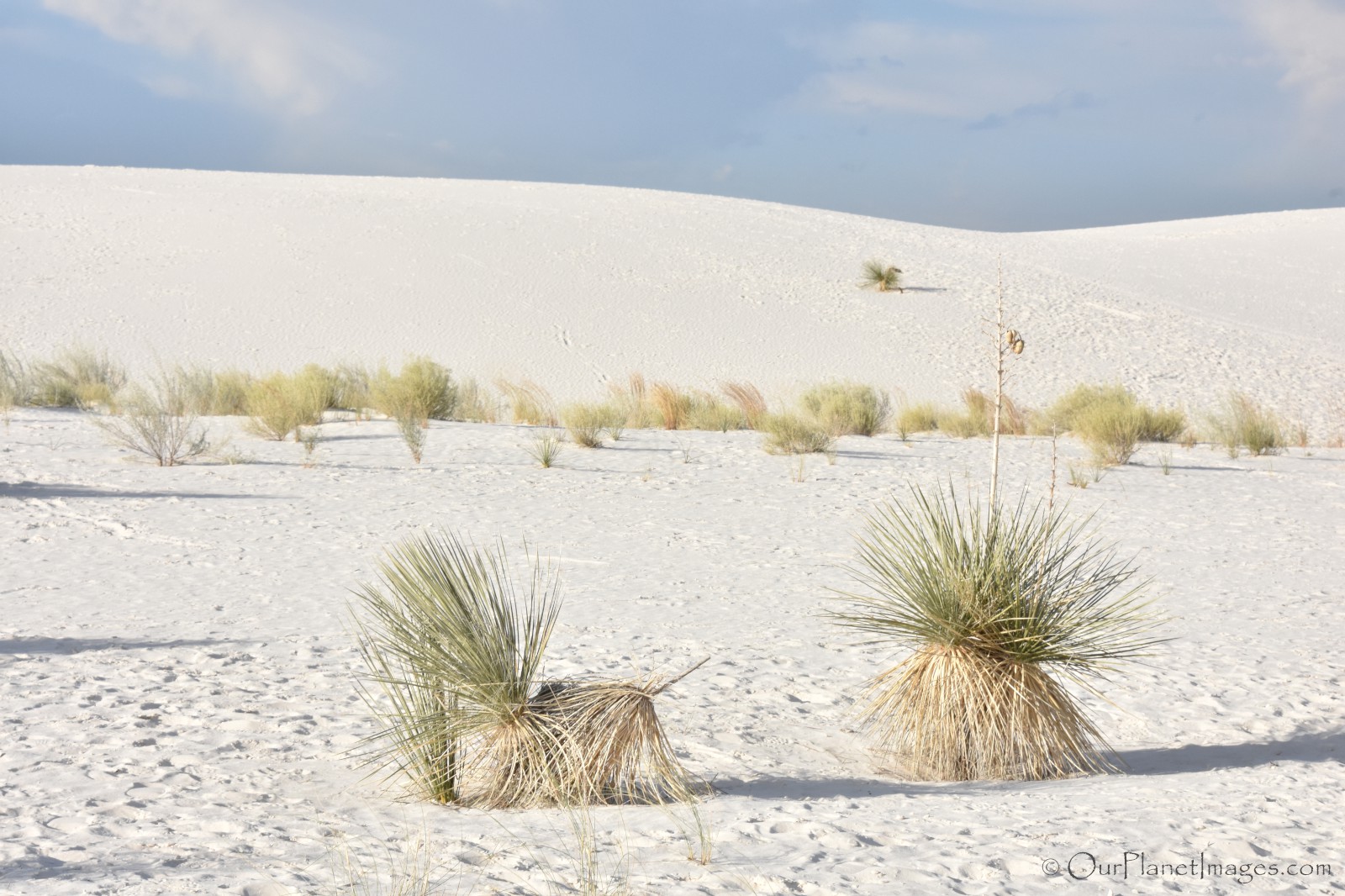
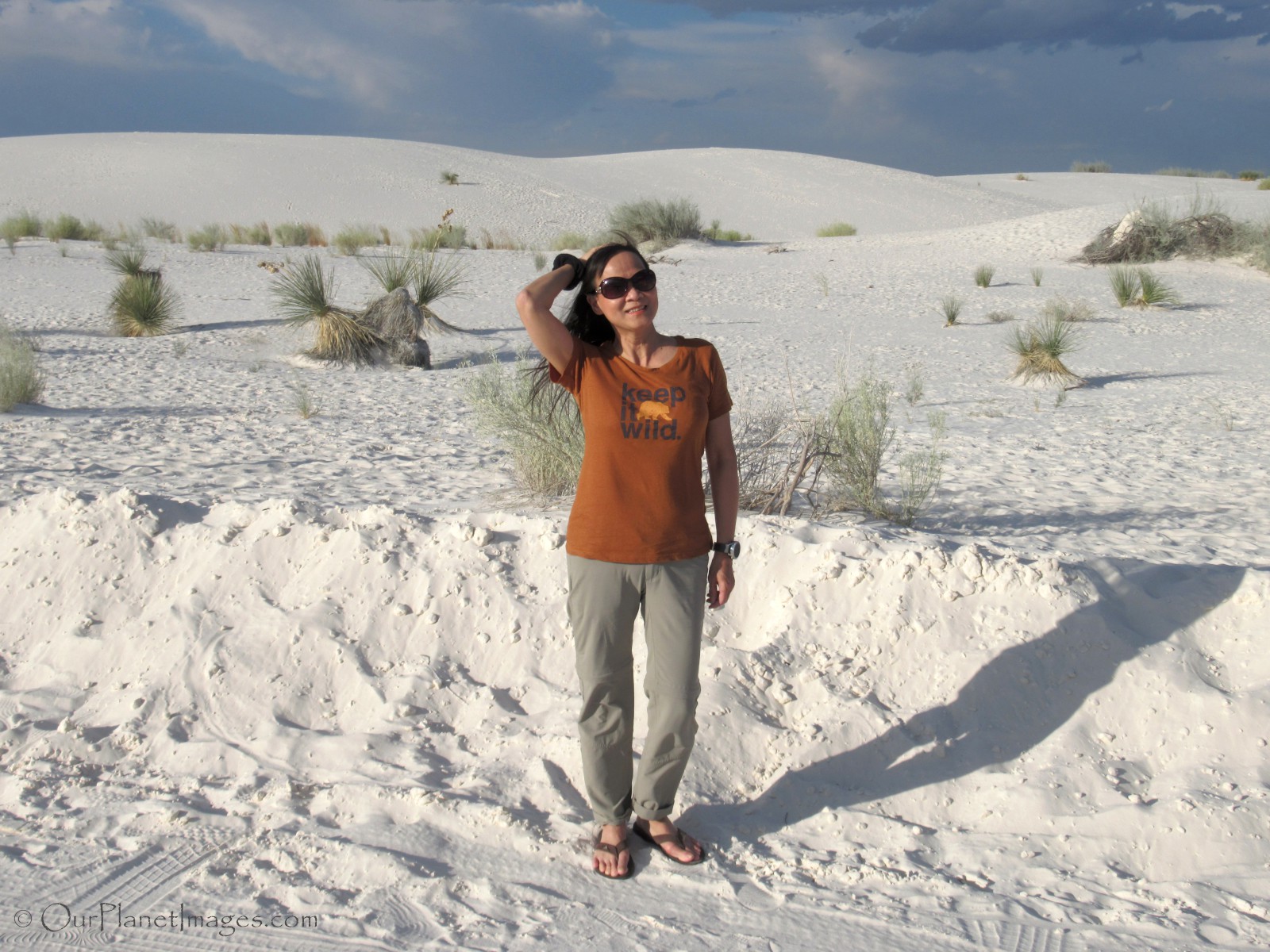
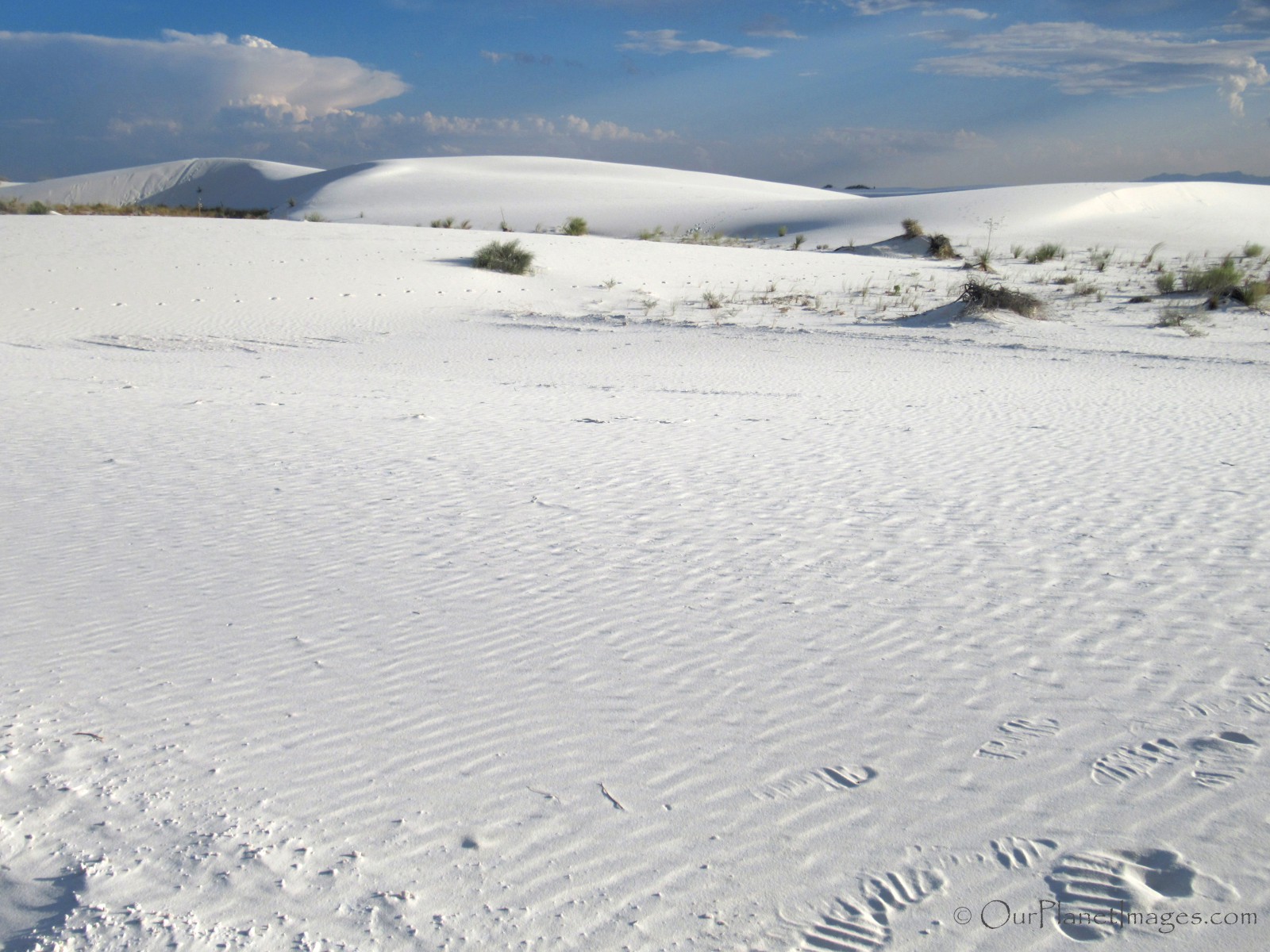
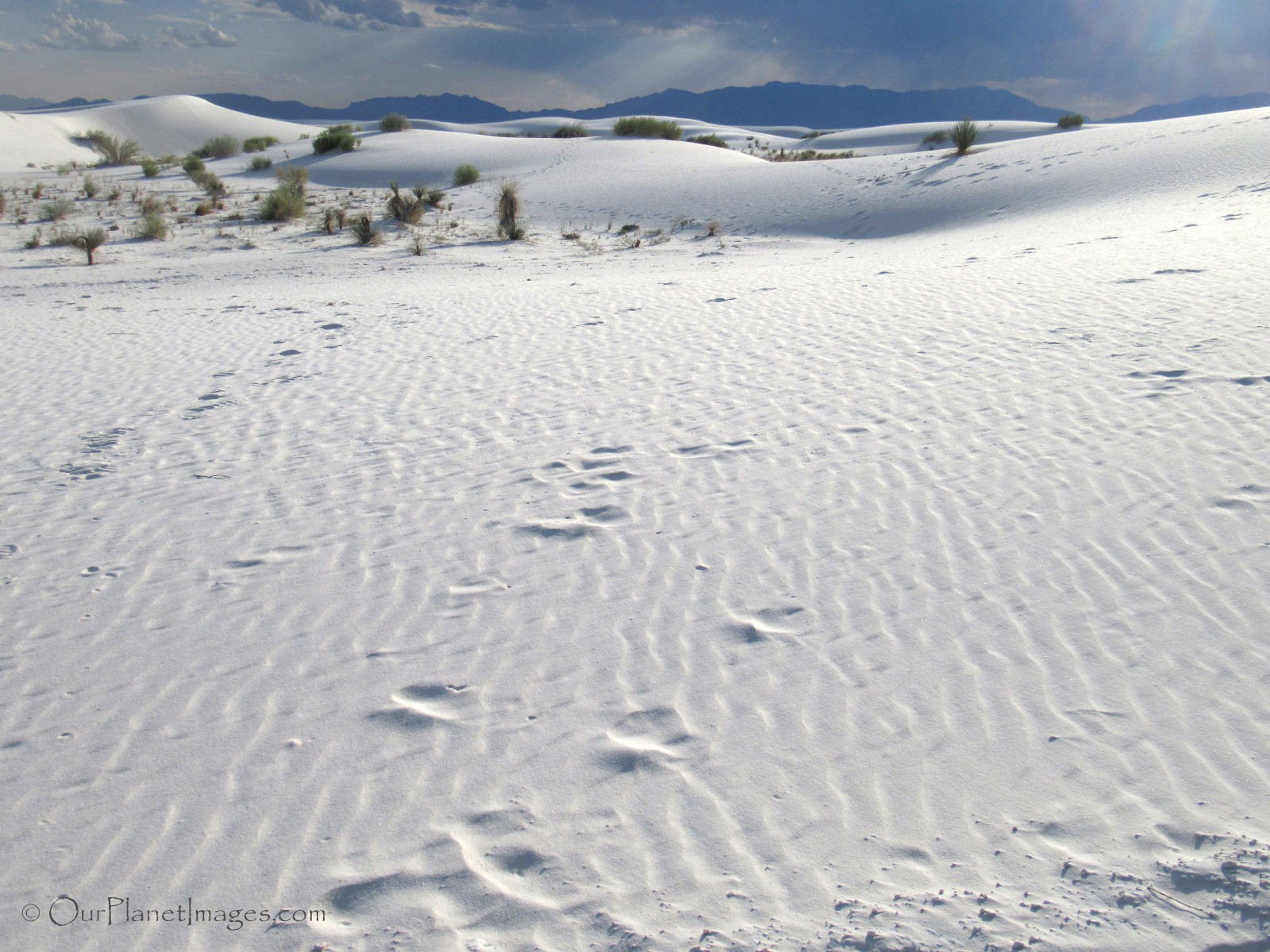
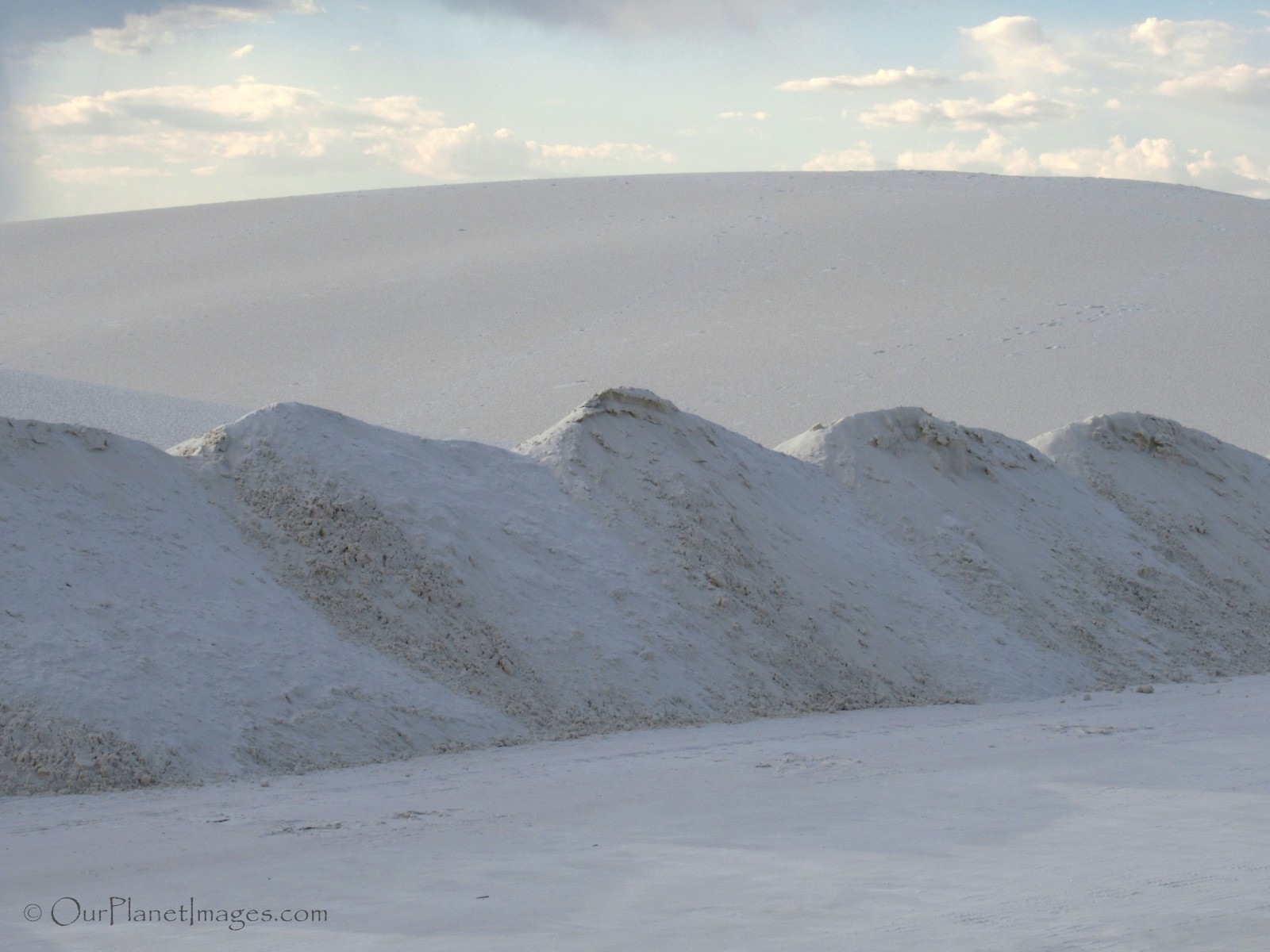
Boardwalk
Almost all of the park is completely natural with the sand moving where ever it is blown by the wind, even on the road. However, there is a small inter-dune boardwalk that covers a distance of 0.4 miles. It is an easy walkable boardwalk that is also wheelchair accessible.
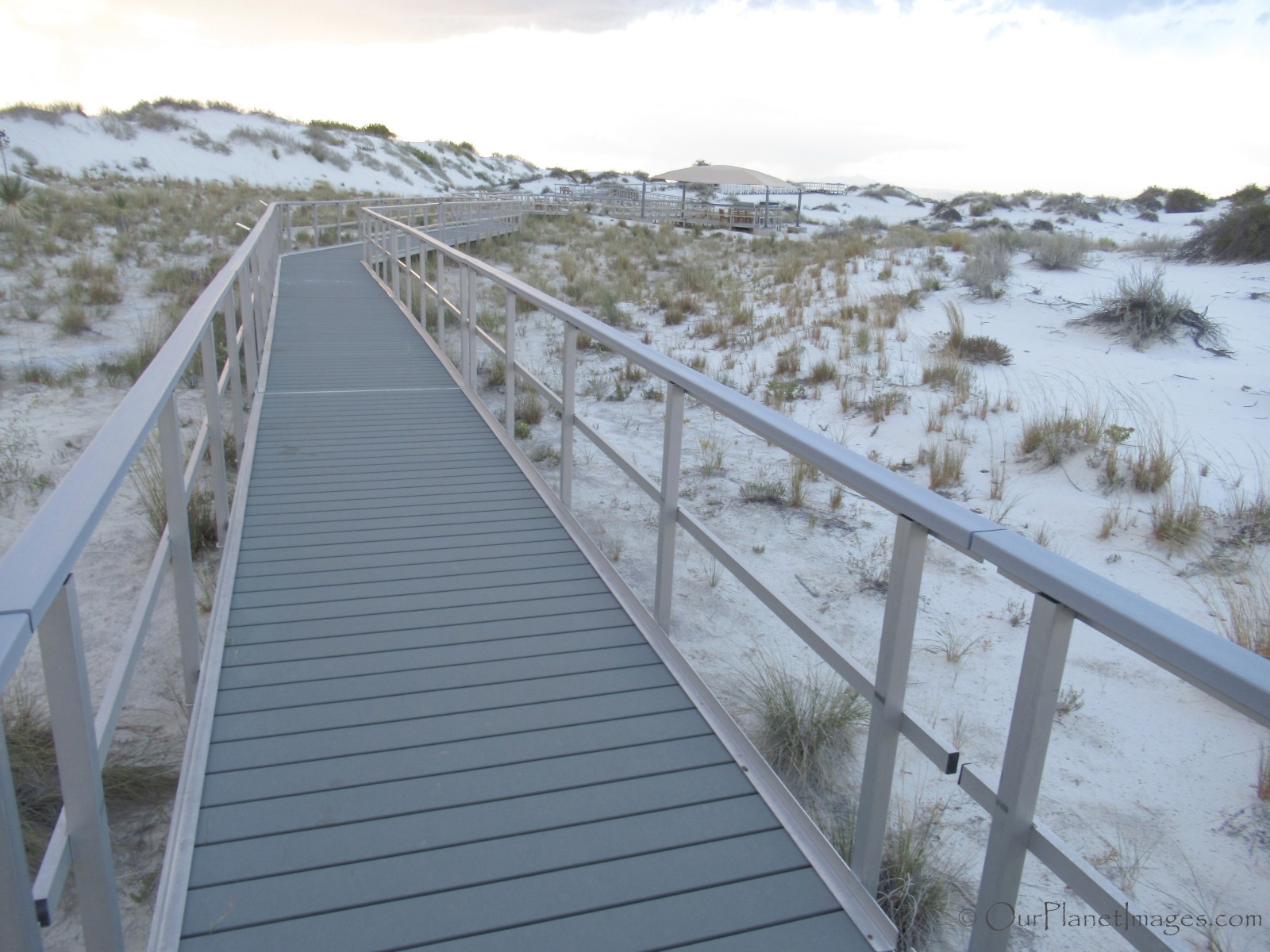
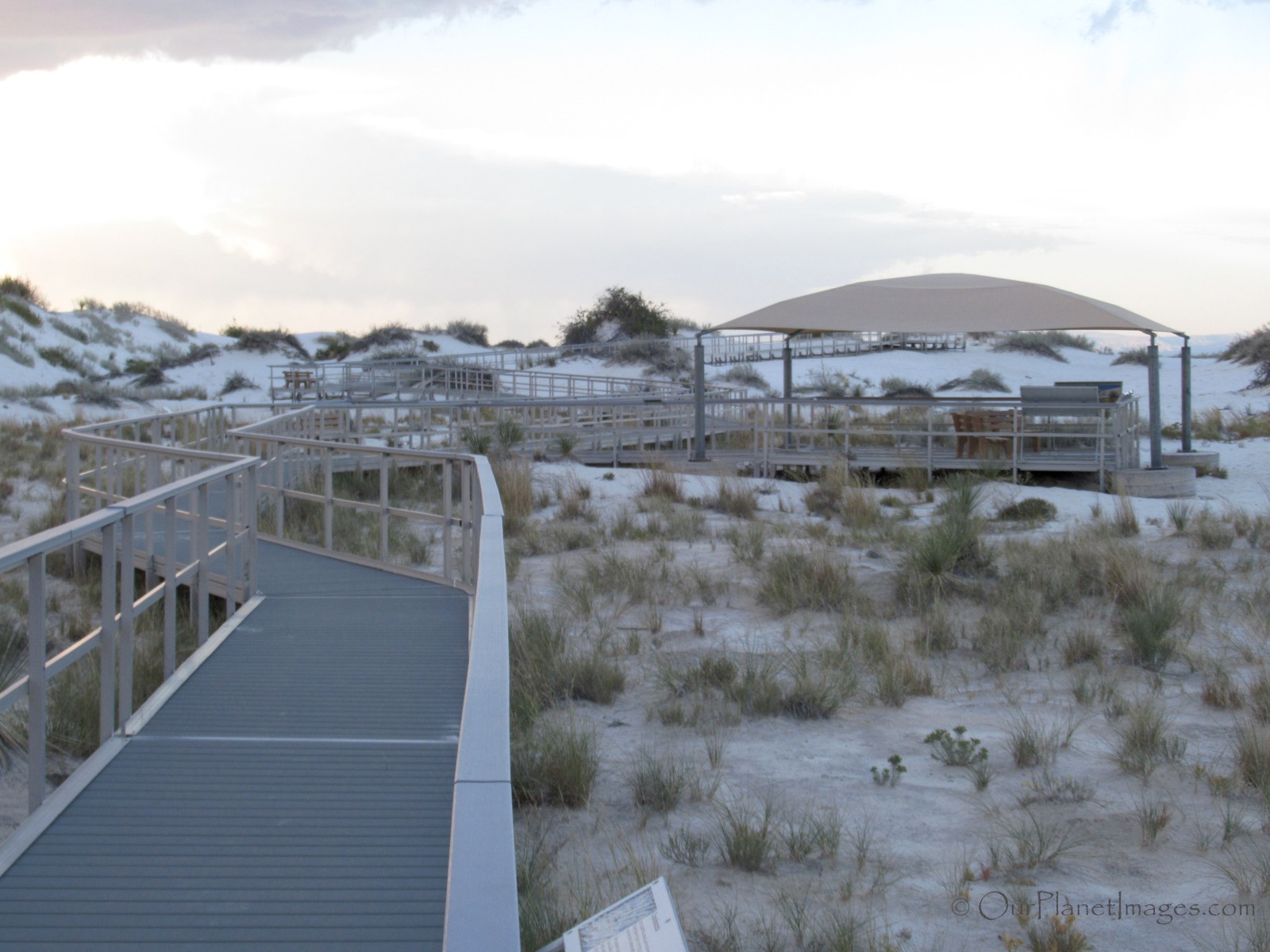
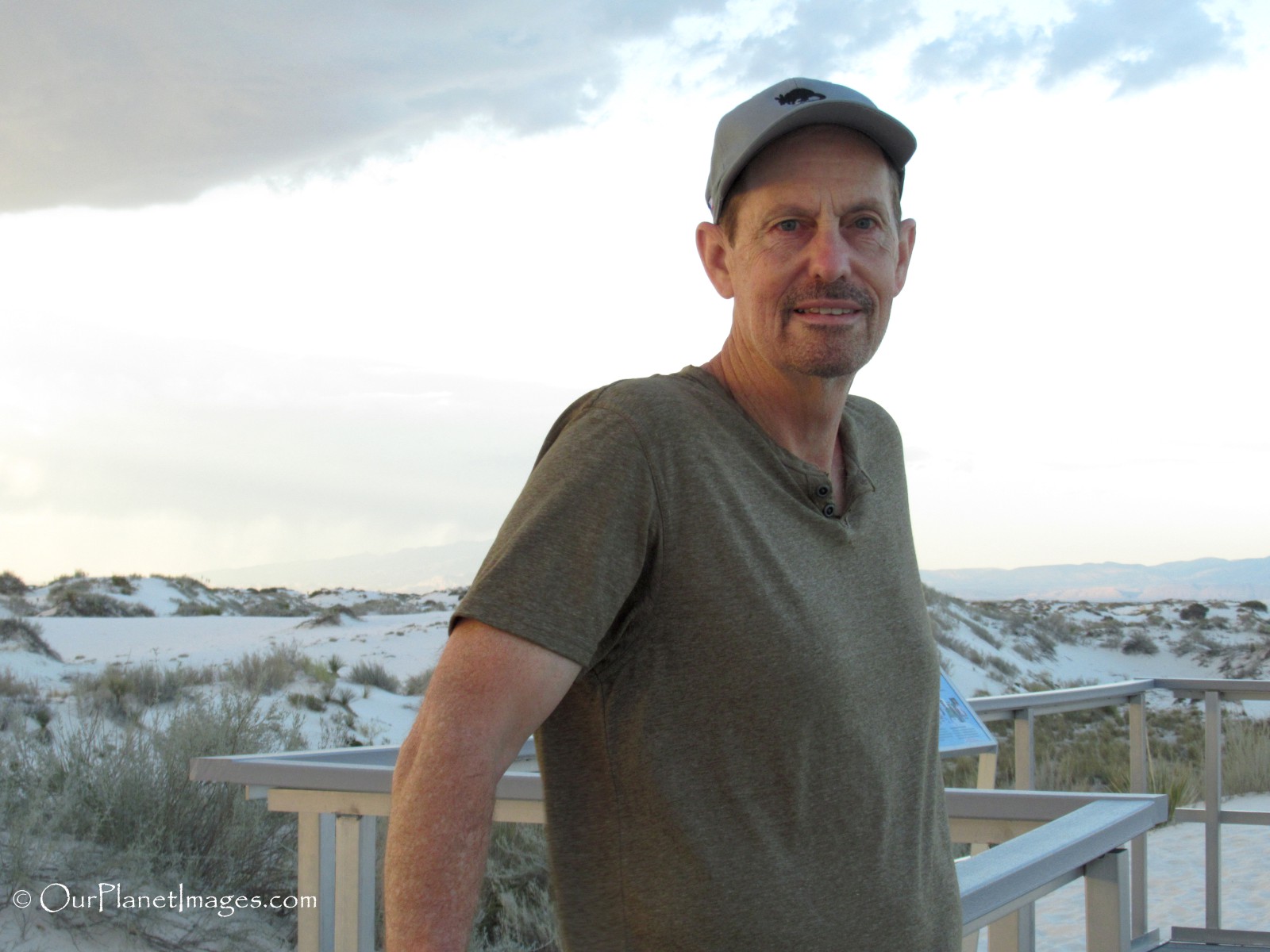
Picnic Area
There is also a small picnic area that is covered from the sun and shielded on one side to block the blowing sand in the prevailing wind direction.
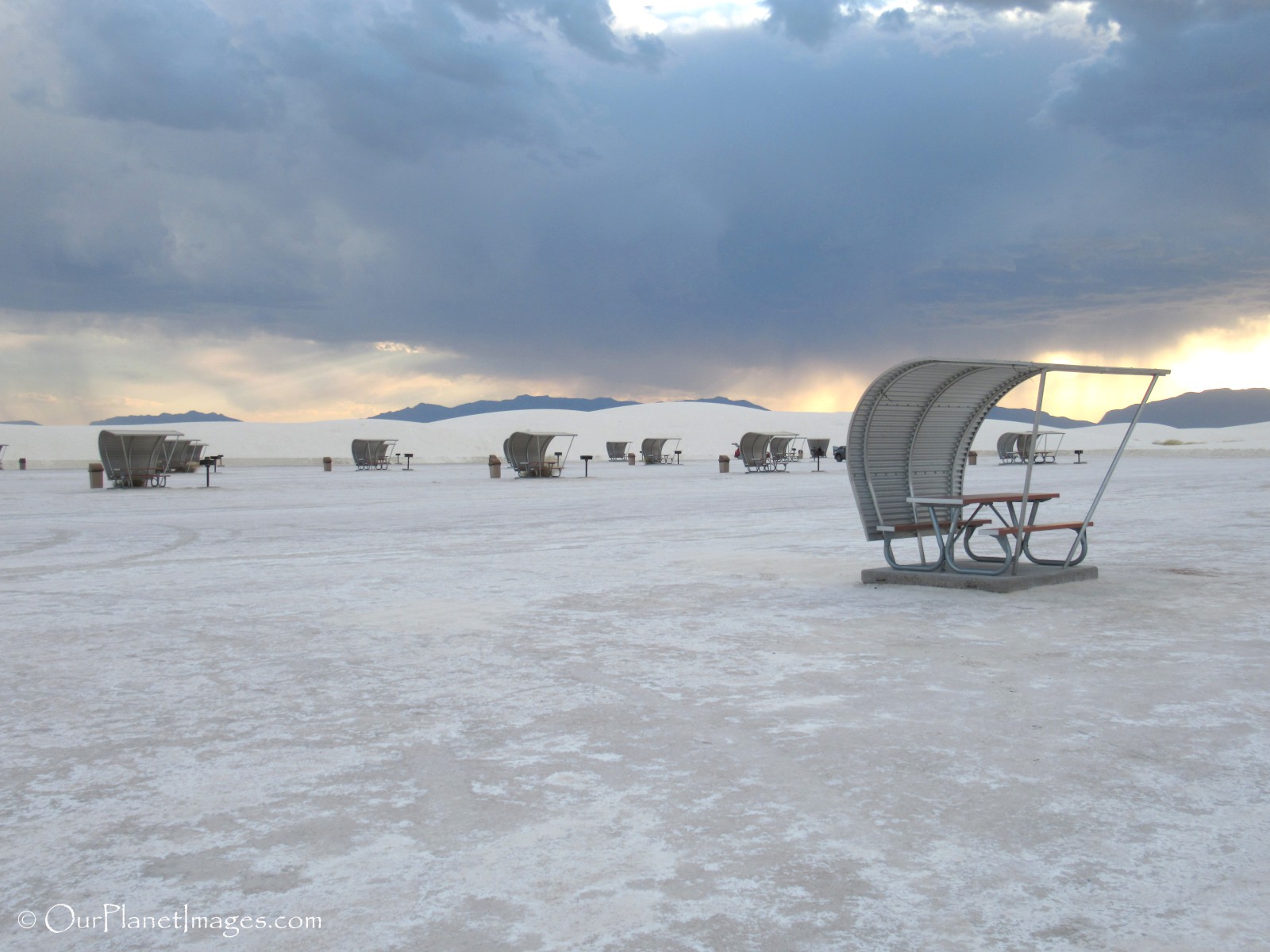
Grass and other plants
The most common vegetation in the park is grass growing in the sand. The thin grass blows in the wind and reminded me of the grass that grows in the coastal sand dunes.
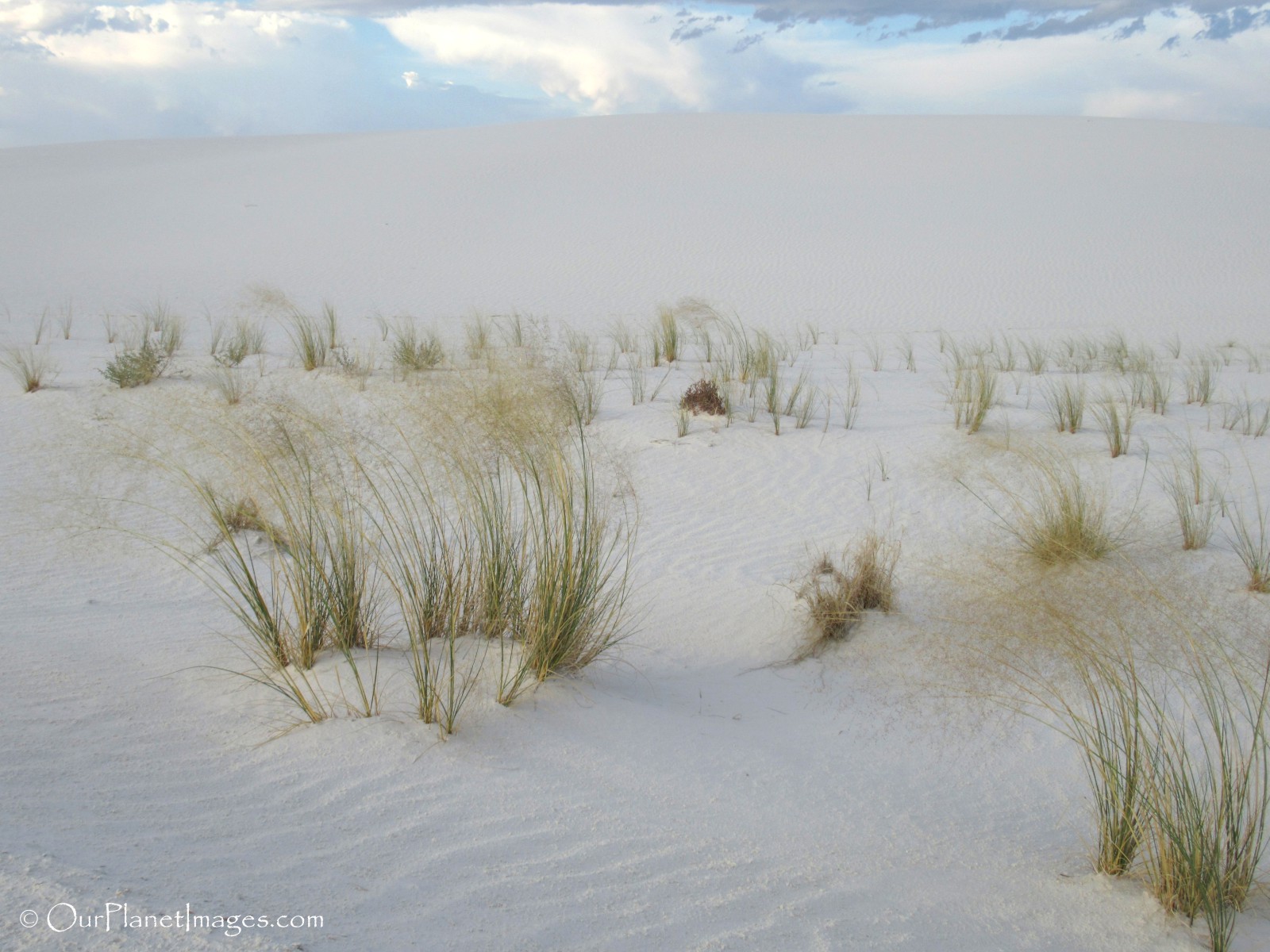
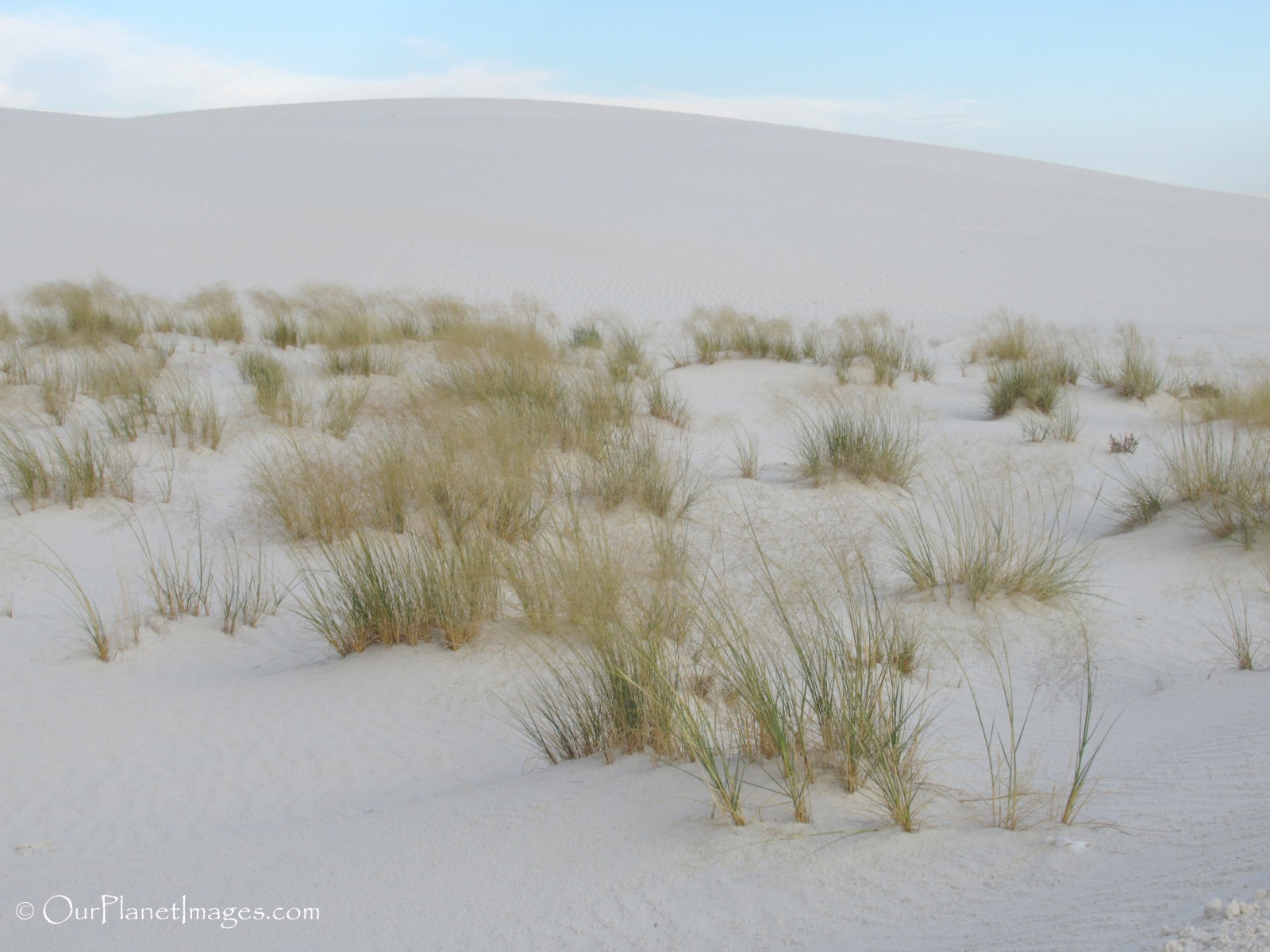
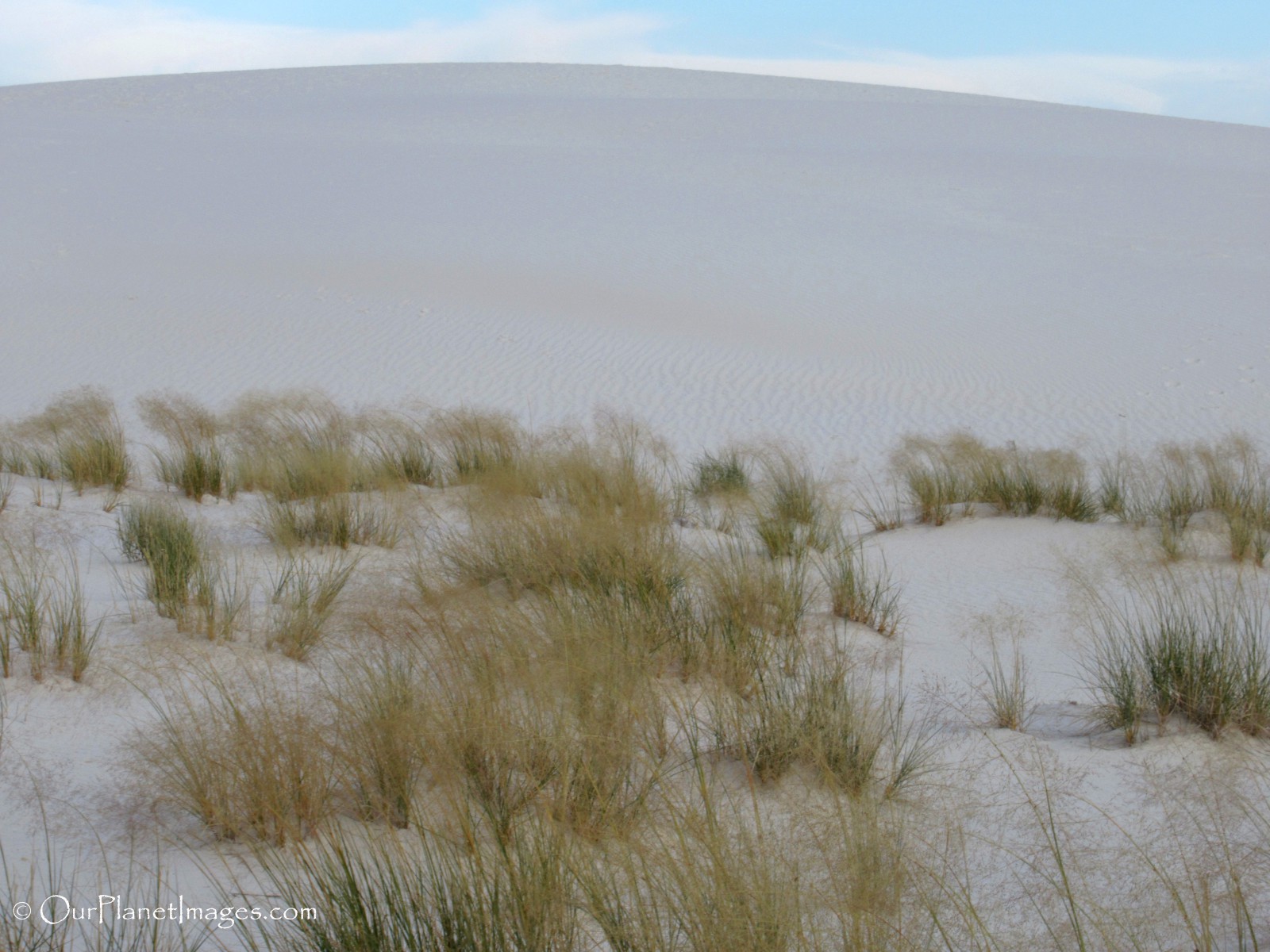
One of the few plants that survive in the sandy dunes are the Soaptree Yuccas. The plant itself is relatively short with the spines in a circular or ball shape.
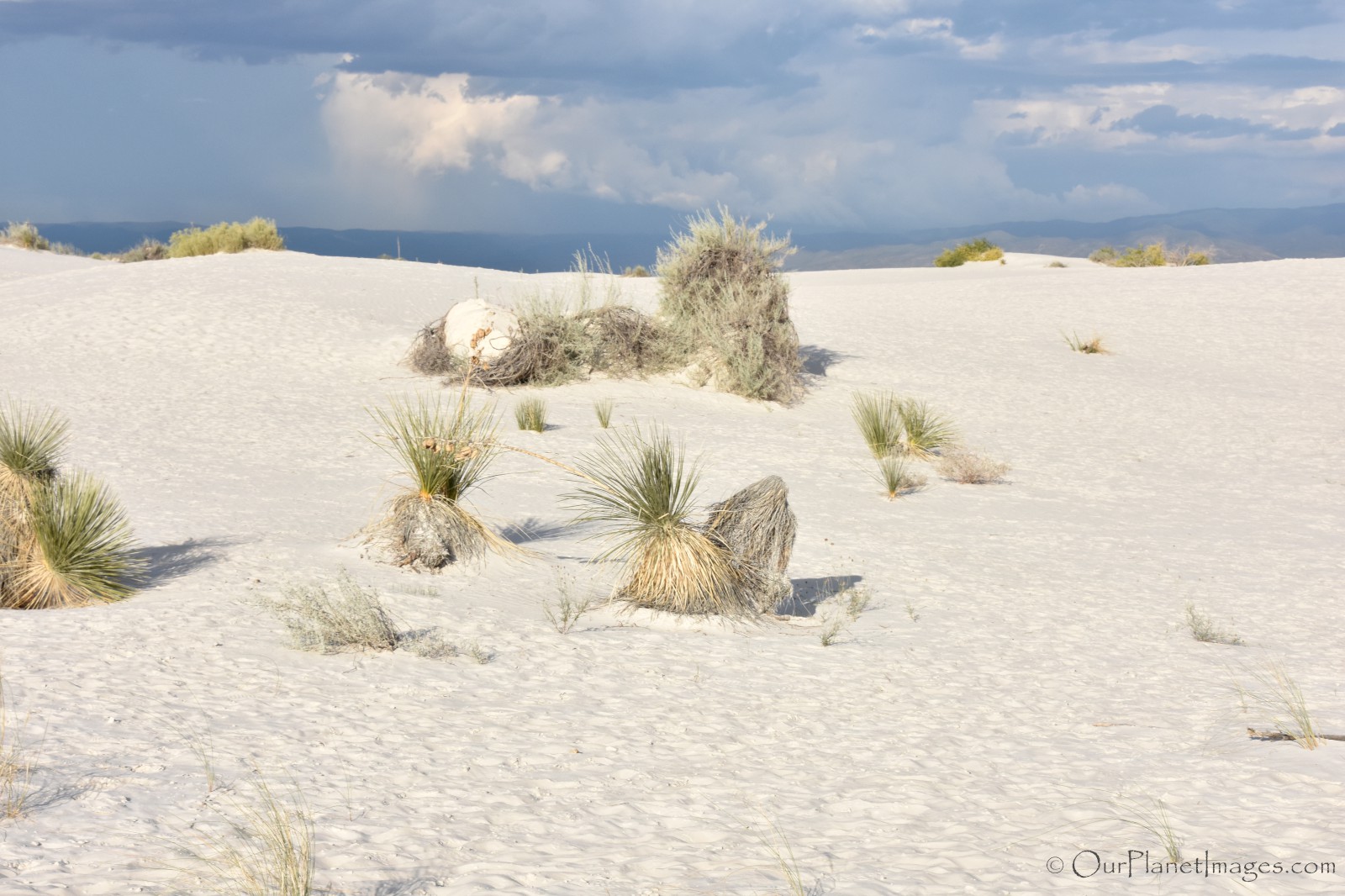
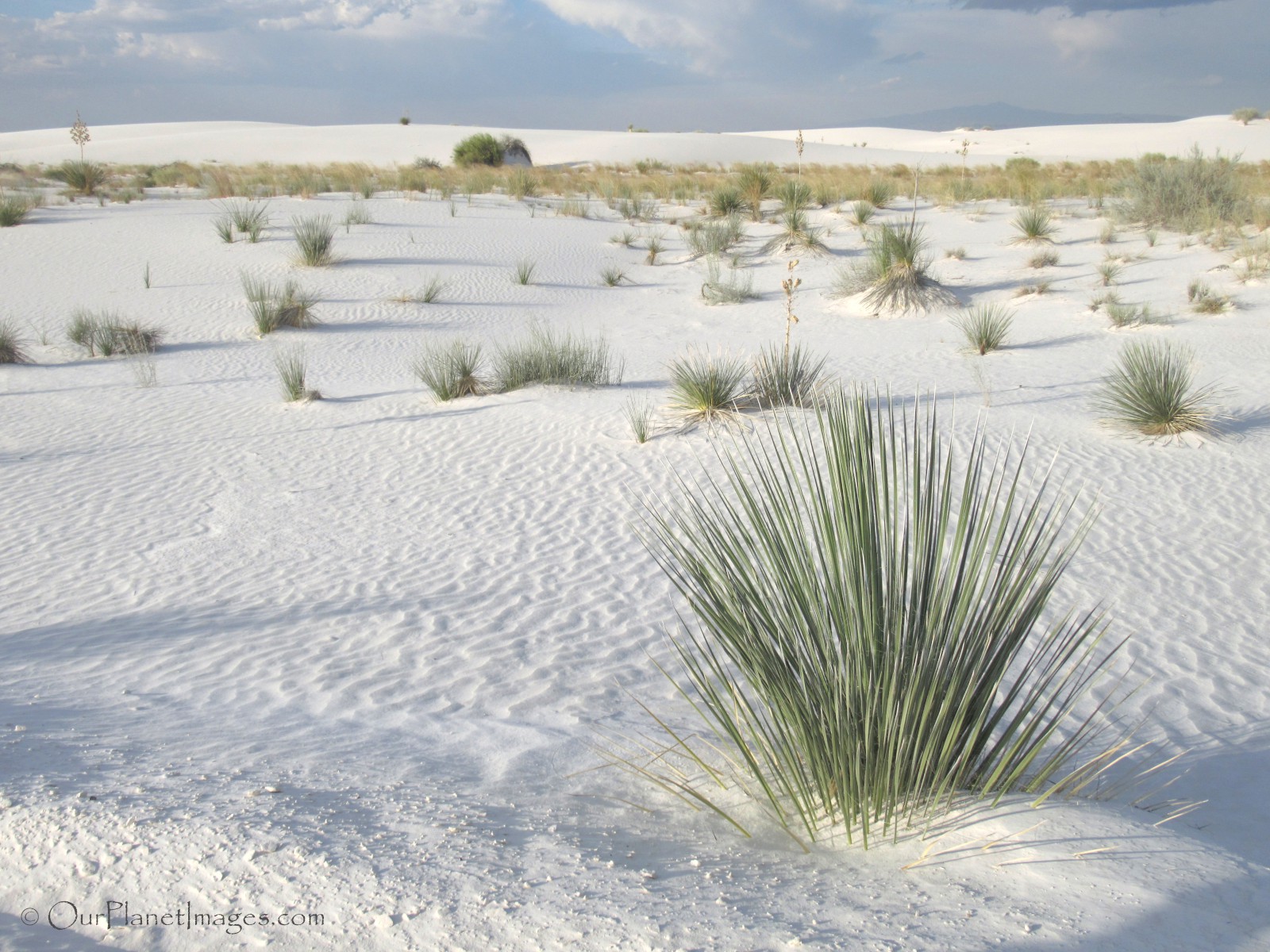
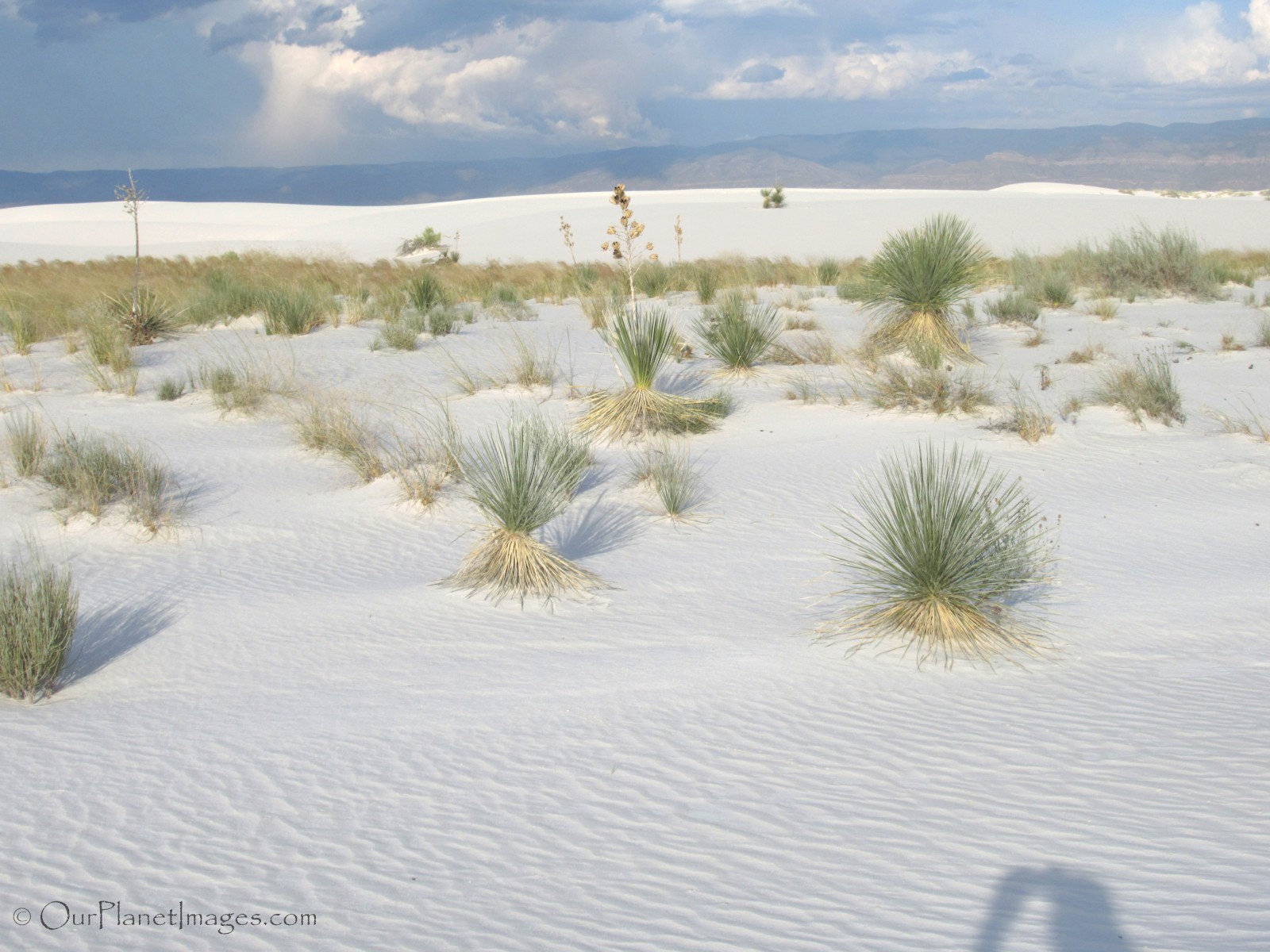
When it blooms, its bloom stalk can grow to over 30 feet tall with a cream colored bloom cluster of flowers along a single tall stalk.
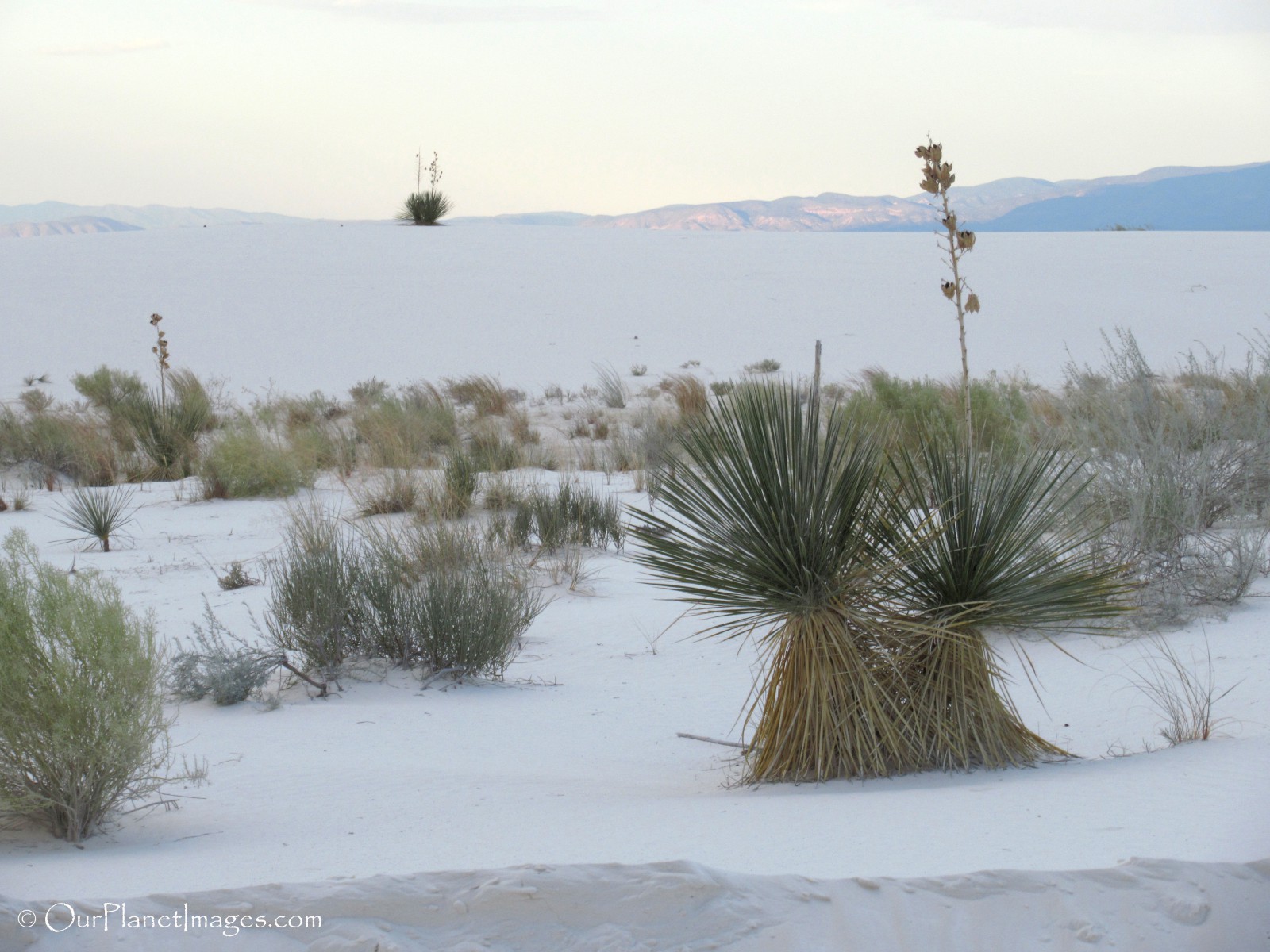
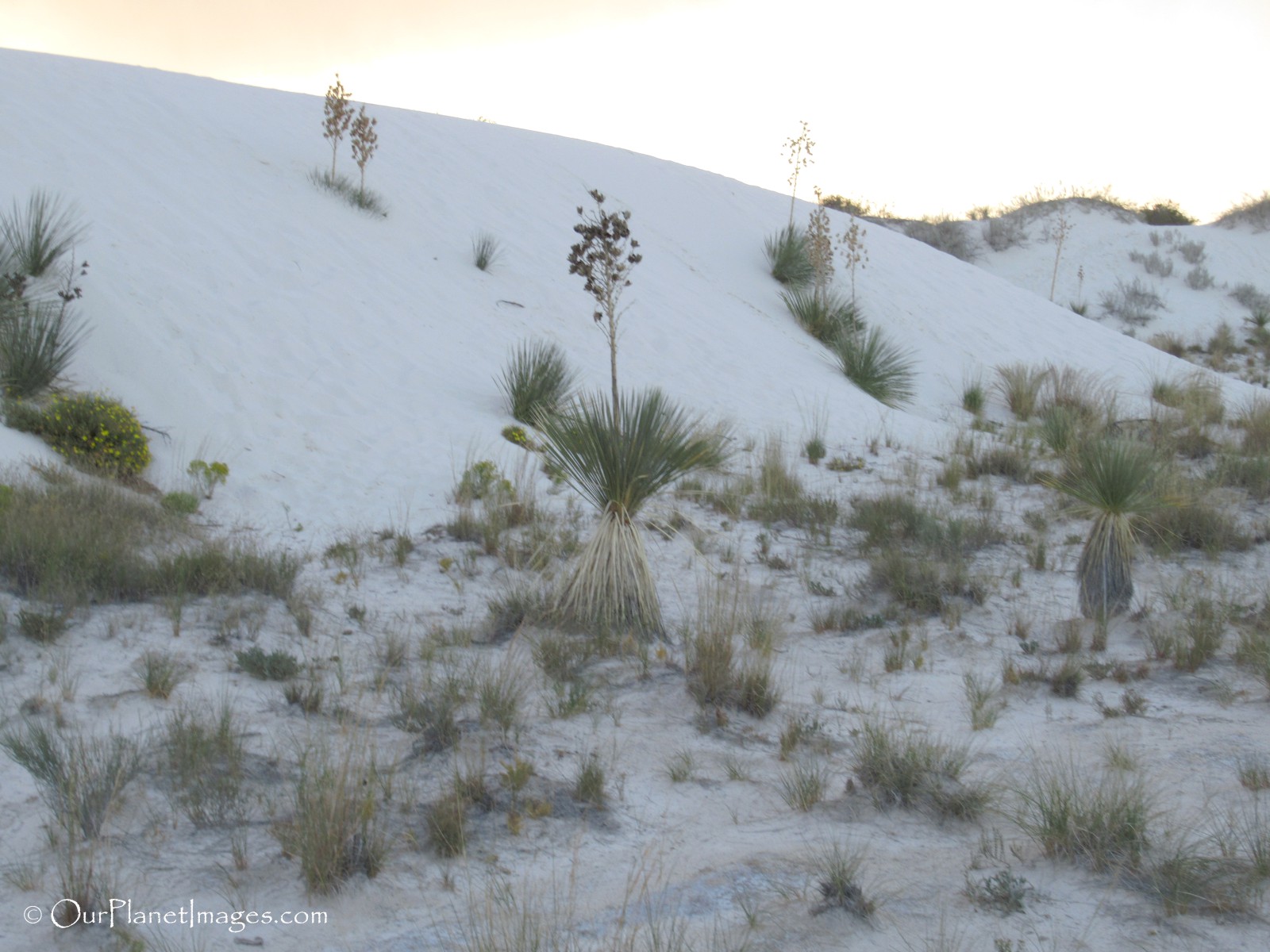
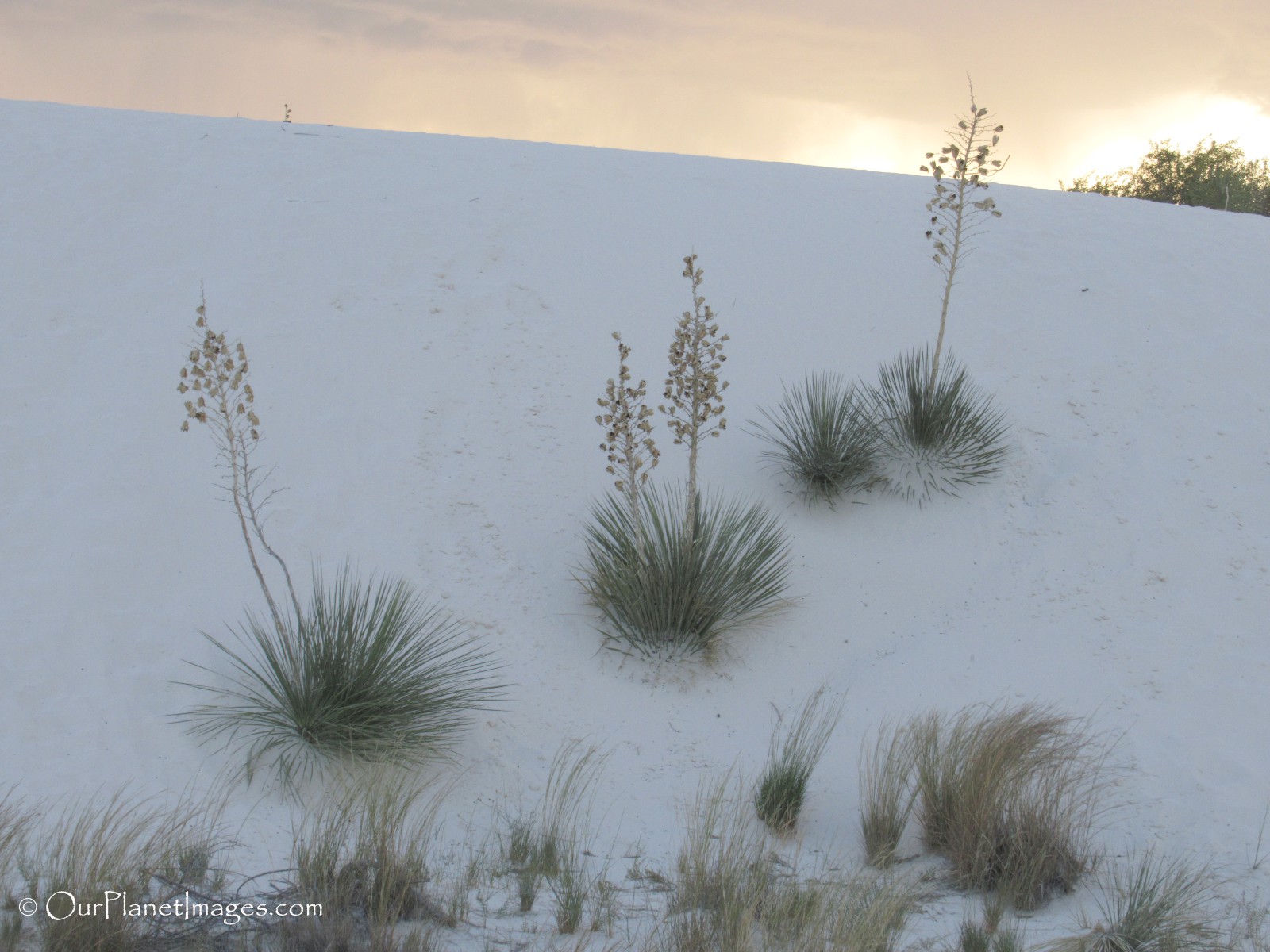
Sunset changes the appearance of the sand
Sunrise and sunset are my favorite time of the day. Many times when I travel to big cities, I enjoy the transition from day to night because that is when the city lights transform the city into its night time life.
Sunset in the desert is also a transition time. When the sun drops behind the dunes, the desert changes in just a few minutes, from the bright white sand desert into having the appearance of an orange sand and then into total darkness.
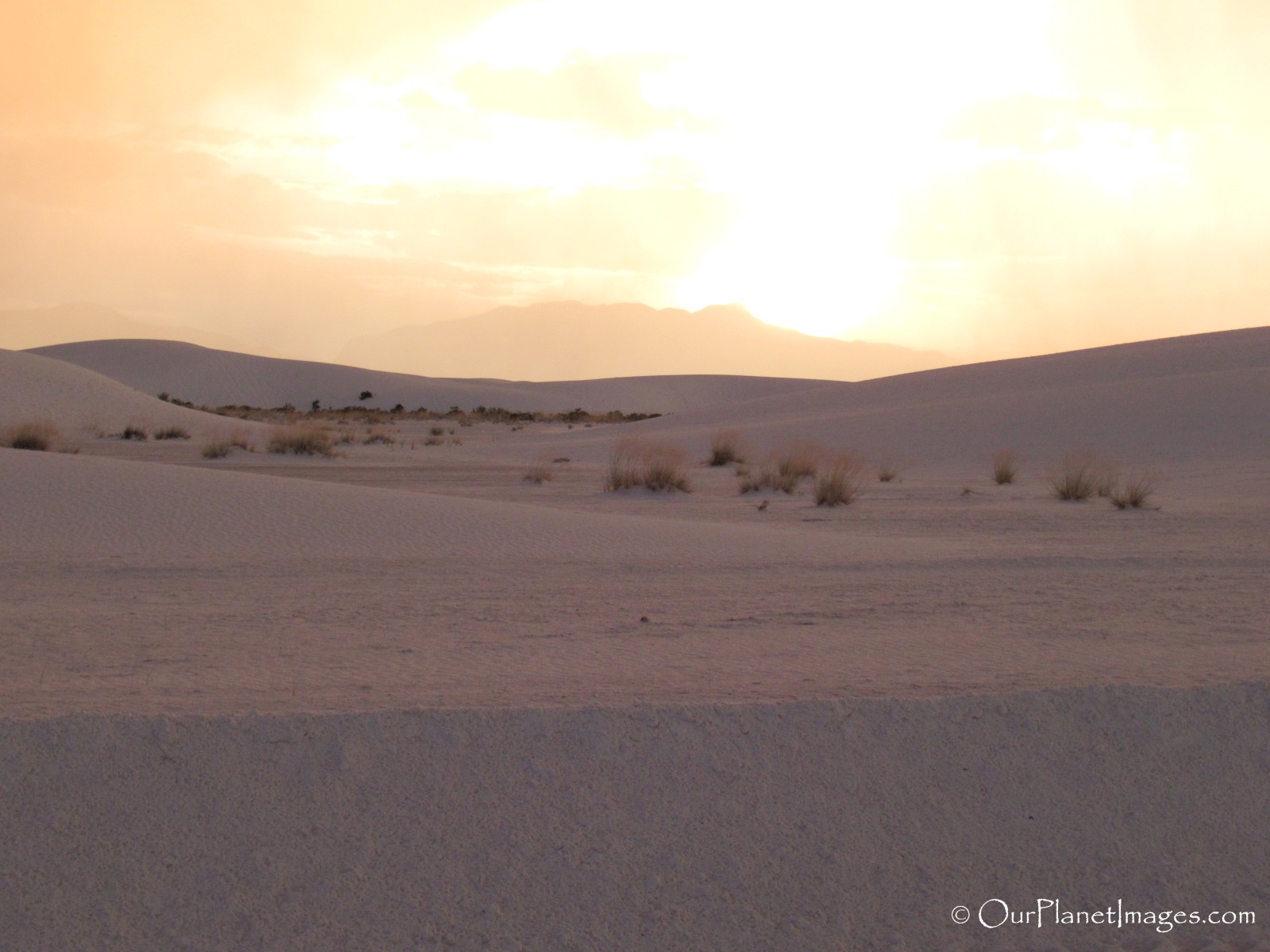
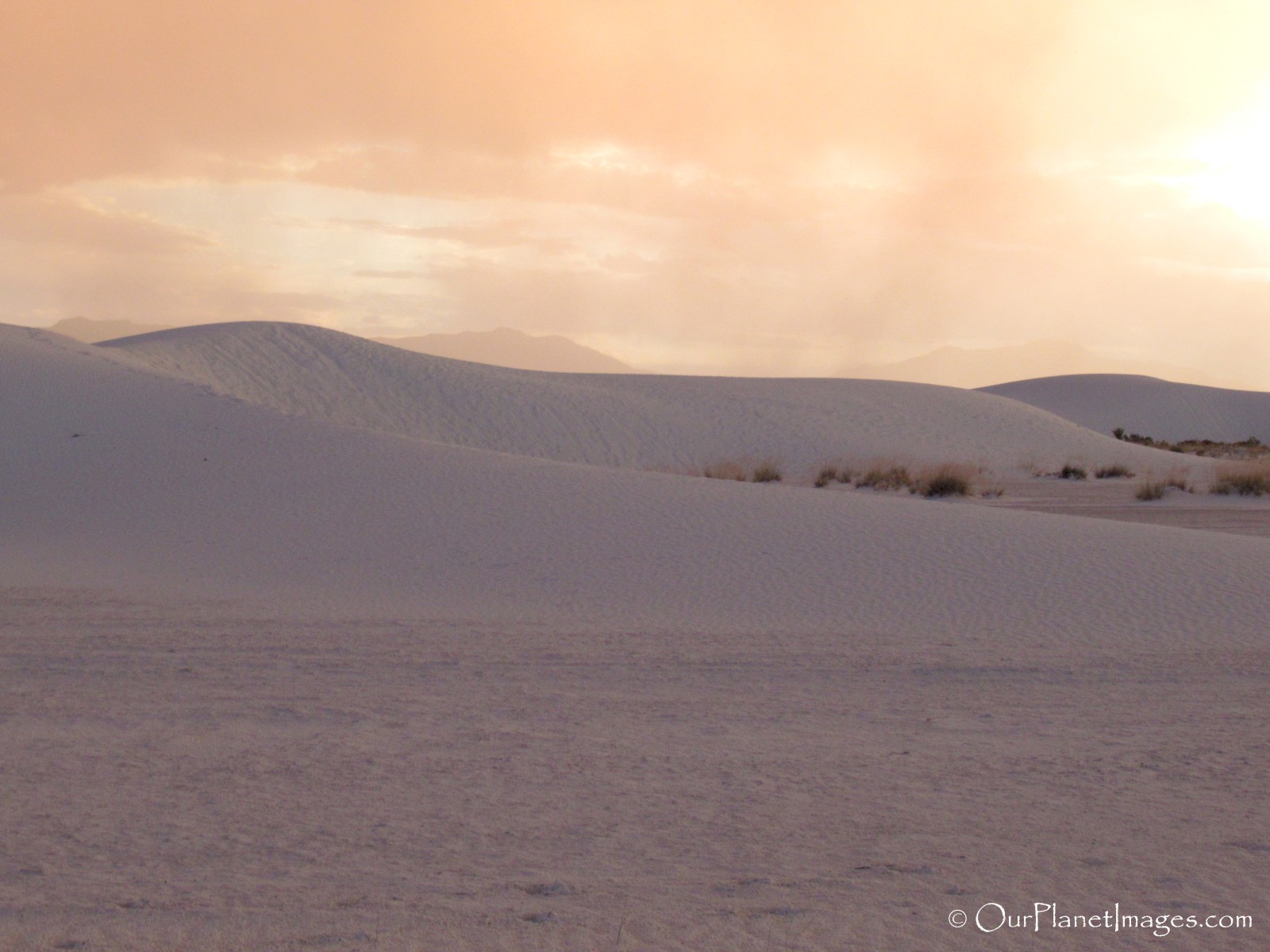
The lighting at sunset changes the pure white sand the gives the park its name into a beautiful orange sand desert. The color of the sunset reflects off the white sand to change the appearance of the sand just like it does the color of the clouds at sunrise or sunset. It is a beautiful time of day that is worth staying in the park to witness.
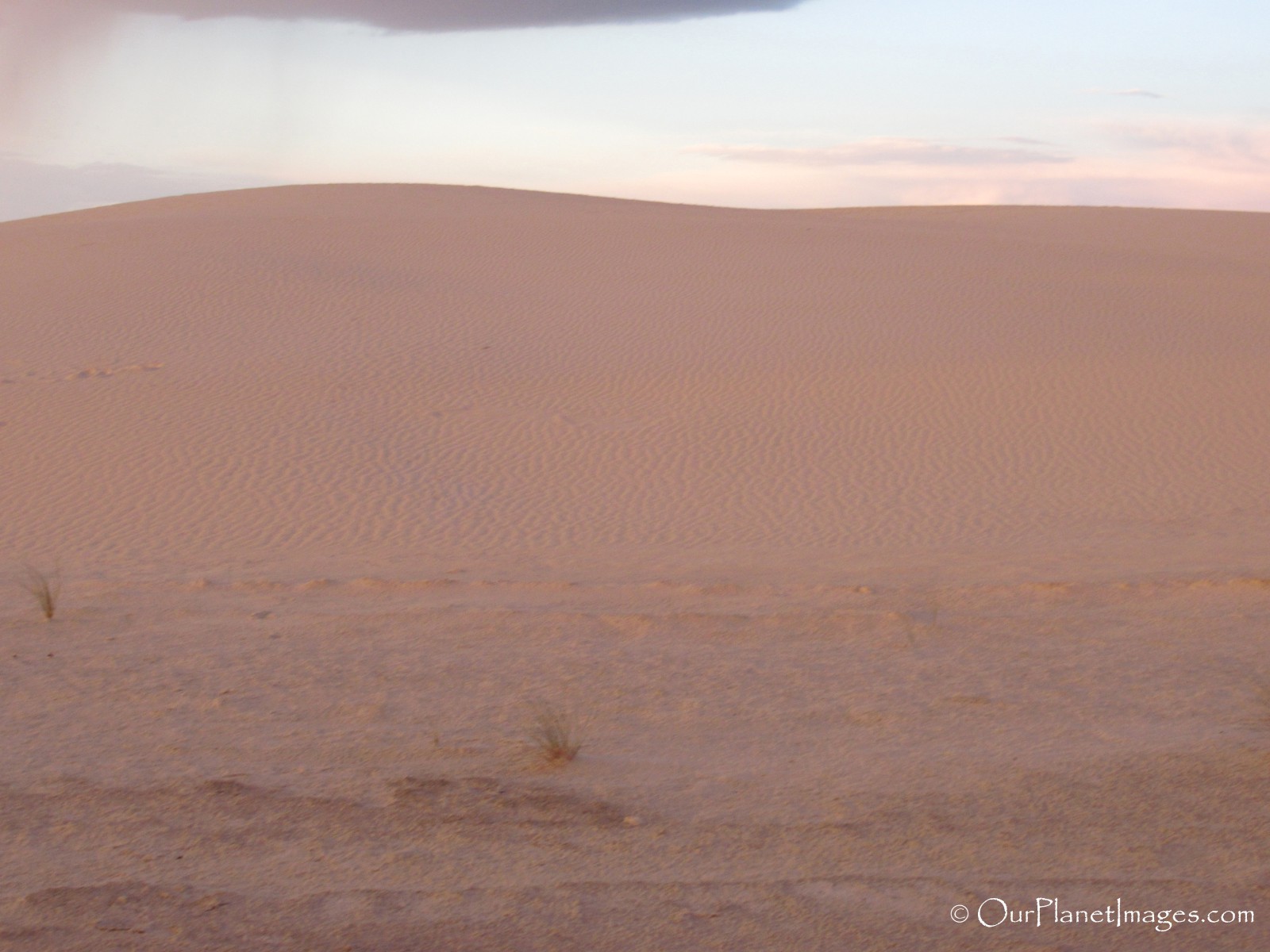
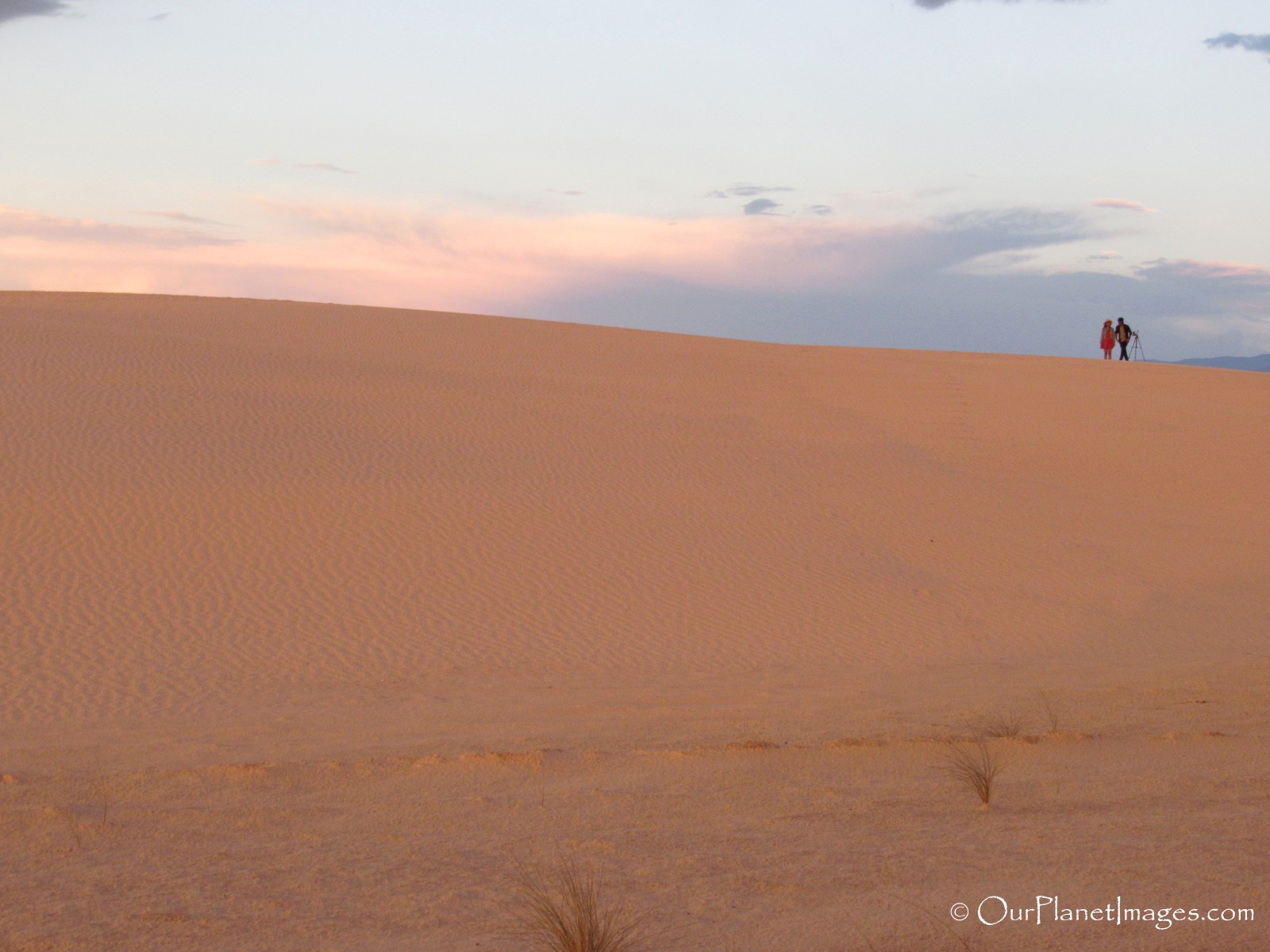
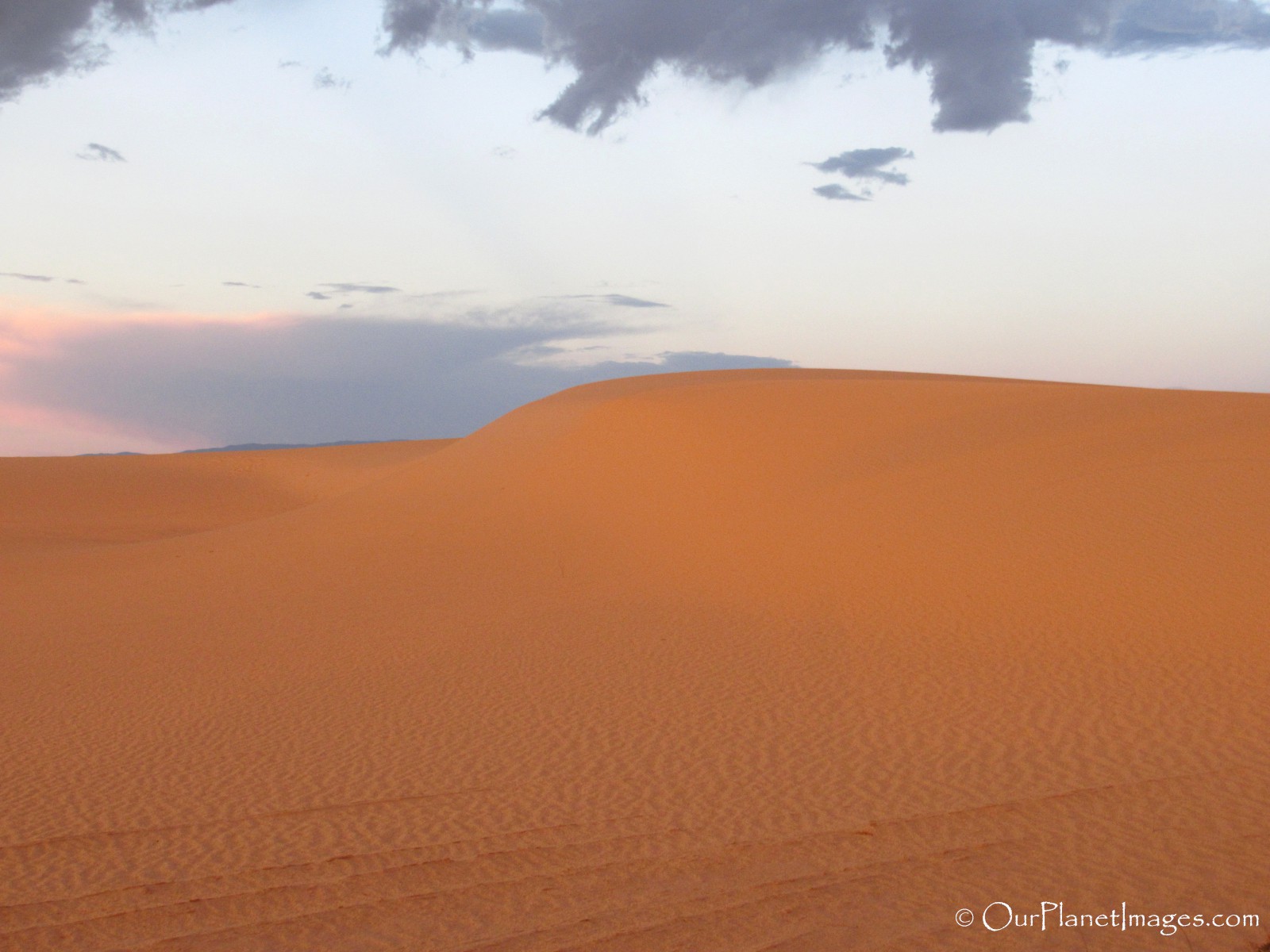
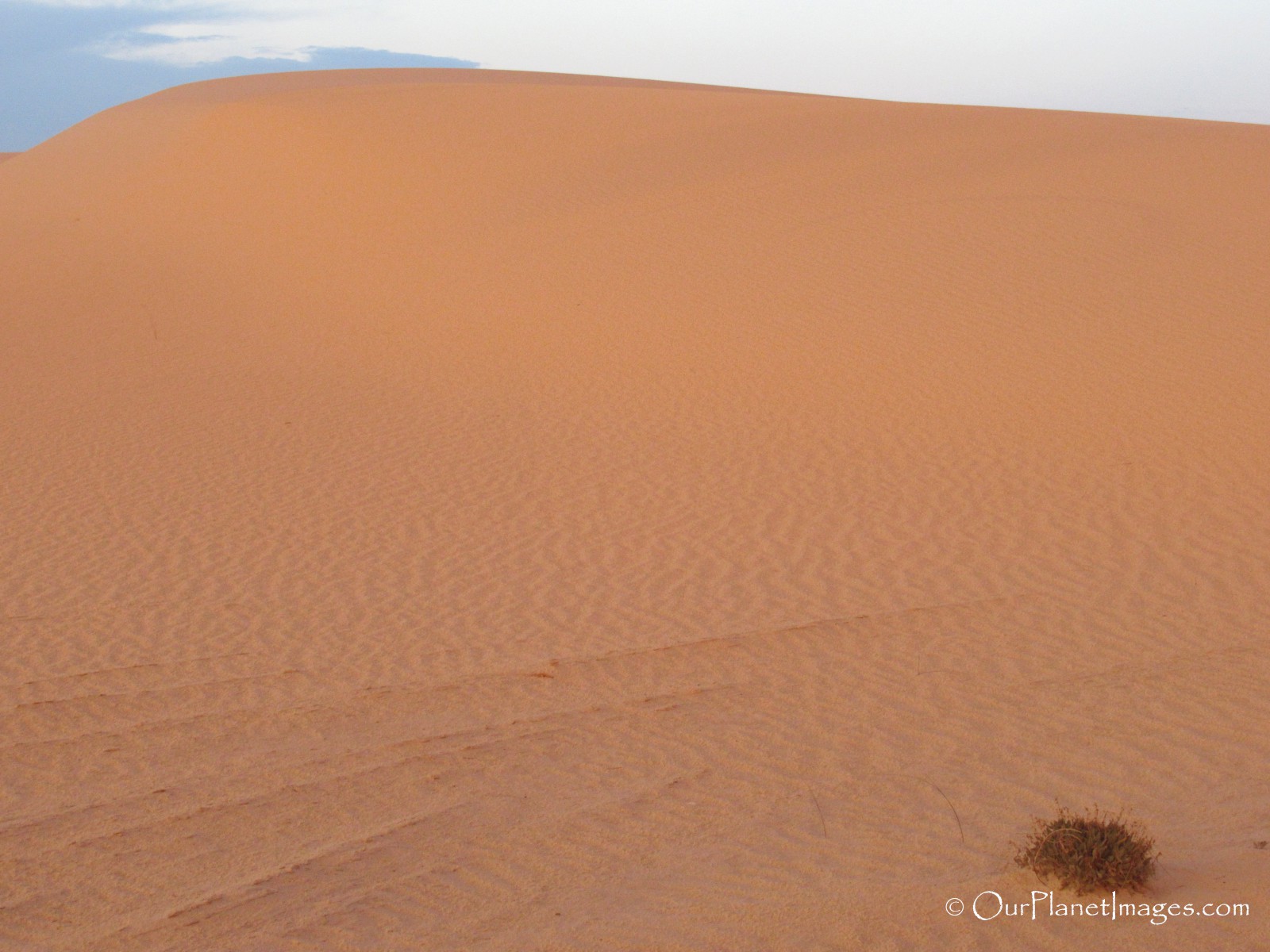

Activities in the park
White Sand National Park is a place for outdoor enthusiasts. One of the top activities is to sled down the giant sand dunes. Sand sledding is really fun and it will make you feel like you are a kid again but beware the sand will literally go everywhere. Other activities are hiking, biking and driving through the striking white sand dunes.
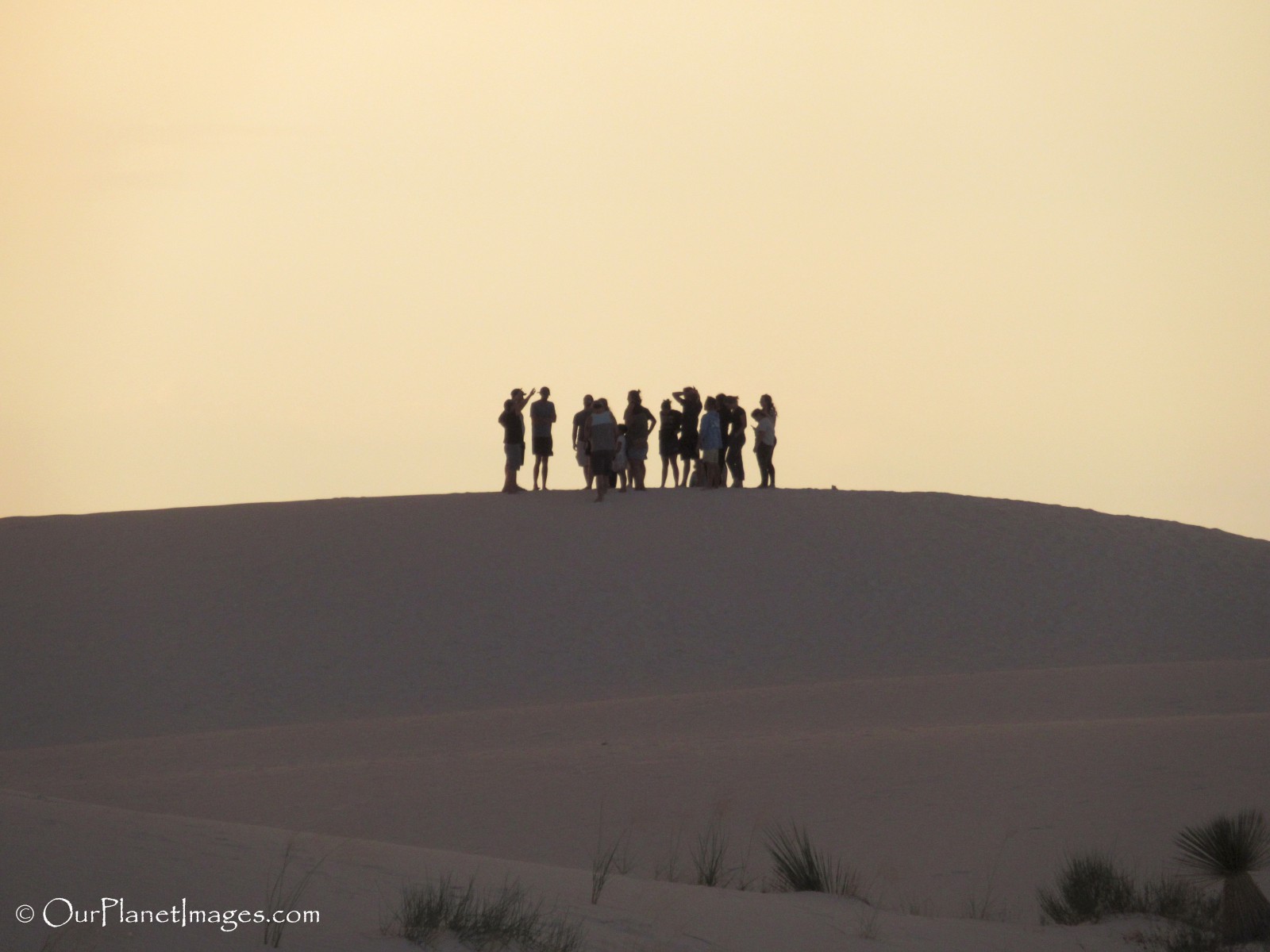
The Dust on My Shoes
White Sands National Park may not be the highest ranked national park but there is a reason that it is a national park. It is one of the world’s most unique natural formations and it is truly beautiful. I have learned over the years that most things in life are what you make of them. Some people will think that there is nothing to do in a desert of white sand but others will see the biggest sand box that they have ever seen.
Deserts are places that most people don’t spend a lot of time, myself included. I have been to several deserts around the world and I think they are special places, maybe because I have only experienced them a few times. In many ways they are harsh and seemingly lifeless but life always finds a way to survive in even the harshest places. There is life in the desert, sometime we have to know where and when to look for it and sometimes it is in plain sight and we just have to pay attention. The Soaptree Yuccas were blooming everywhere but I am sure most people completely overlooked them. I find that true with most places in nature, wildlife is literally all around us but most people don’t pay attention and completely overlook something special right in front of them.
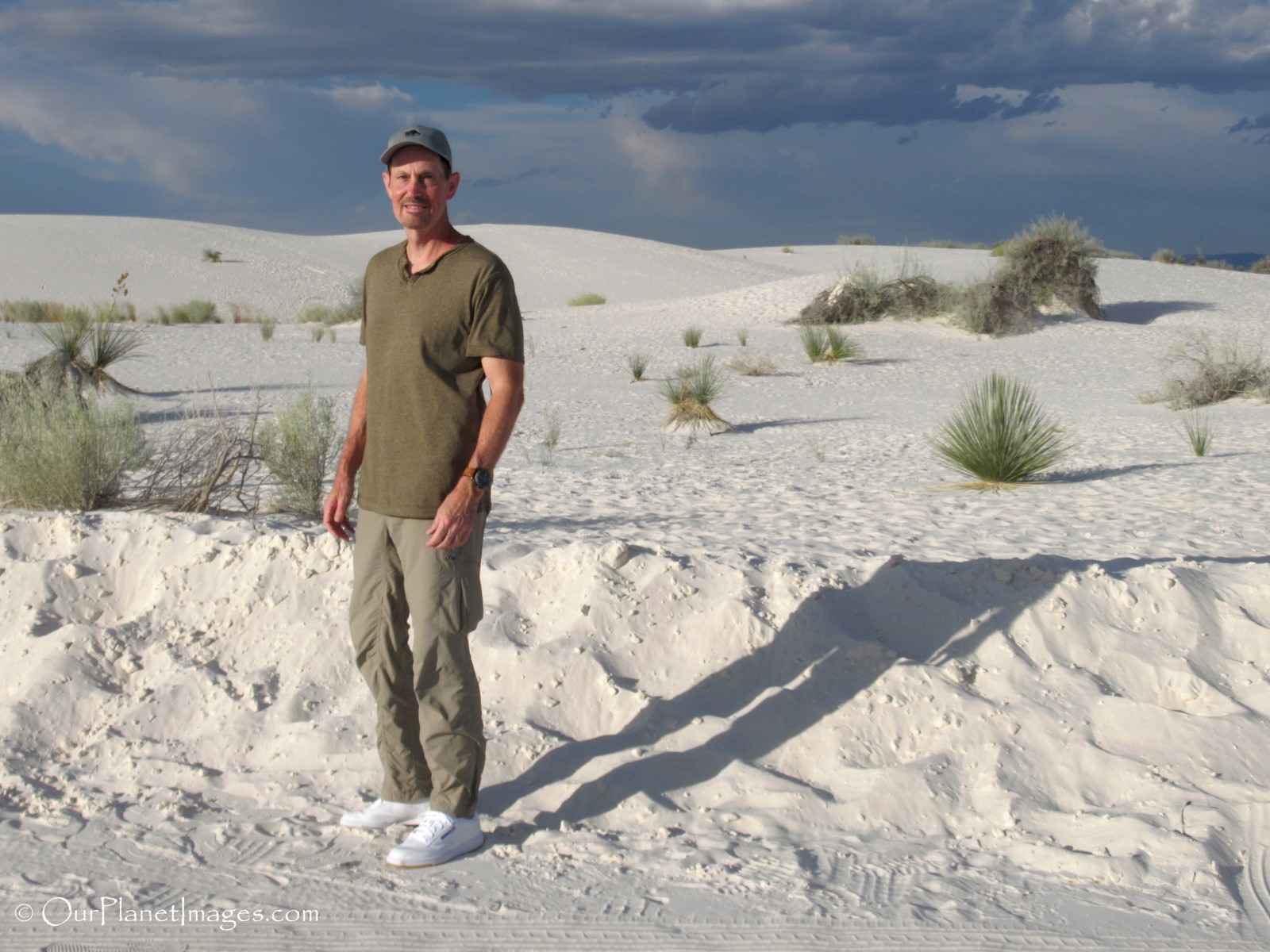
Our world is full of spectacular places to see and things to do. Many times we are disappointed if we aren’t instantly wowed by what we see but there are many wonderful and exciting things to see if we know when and where to look.
